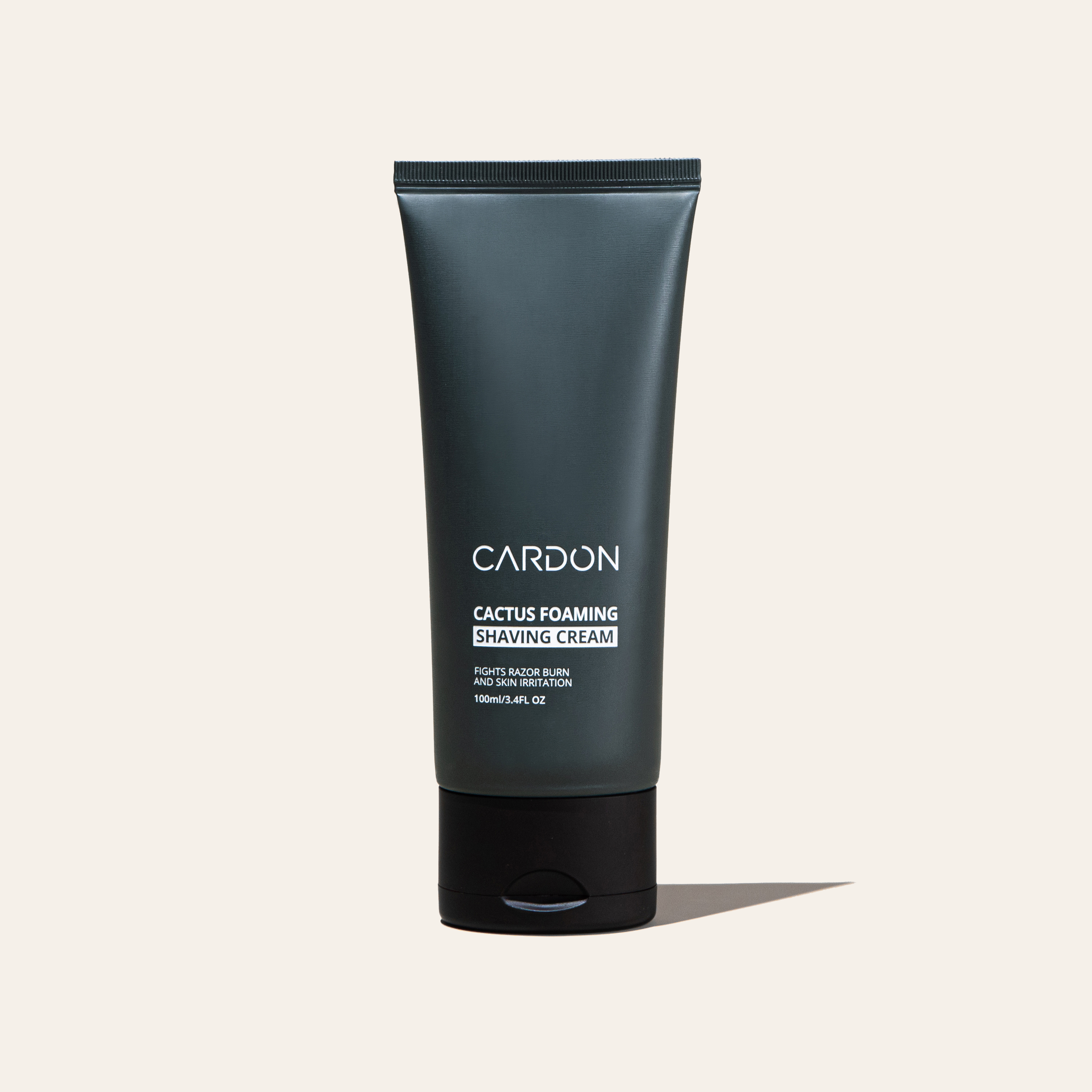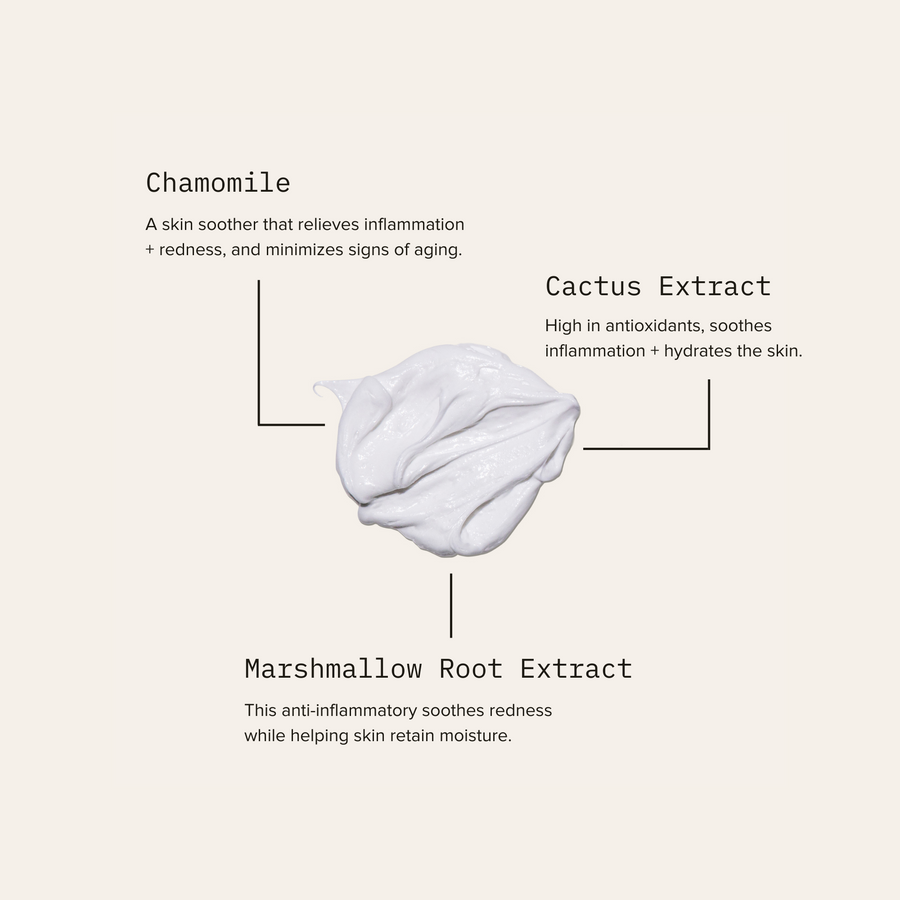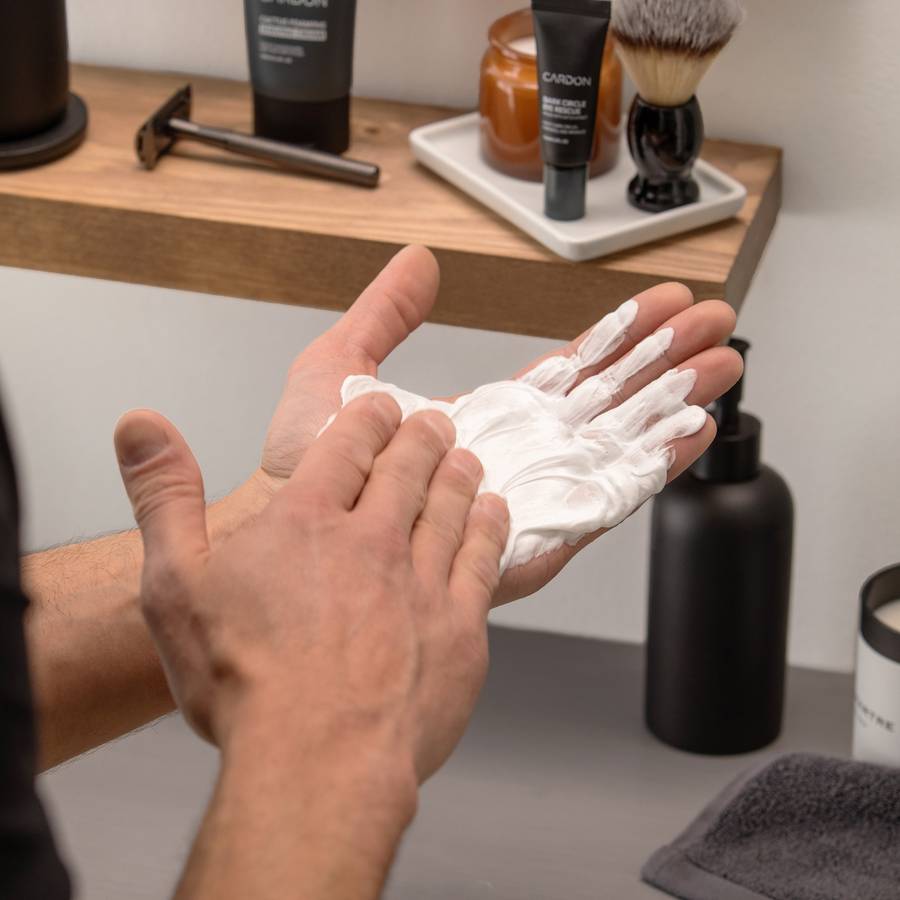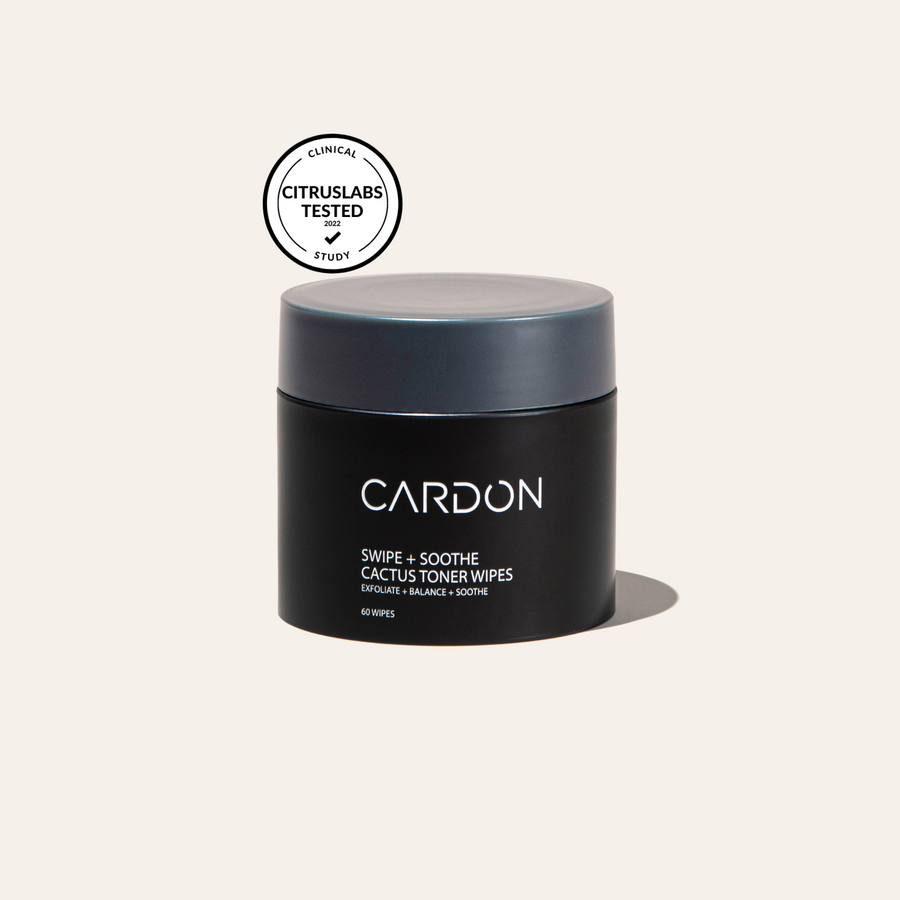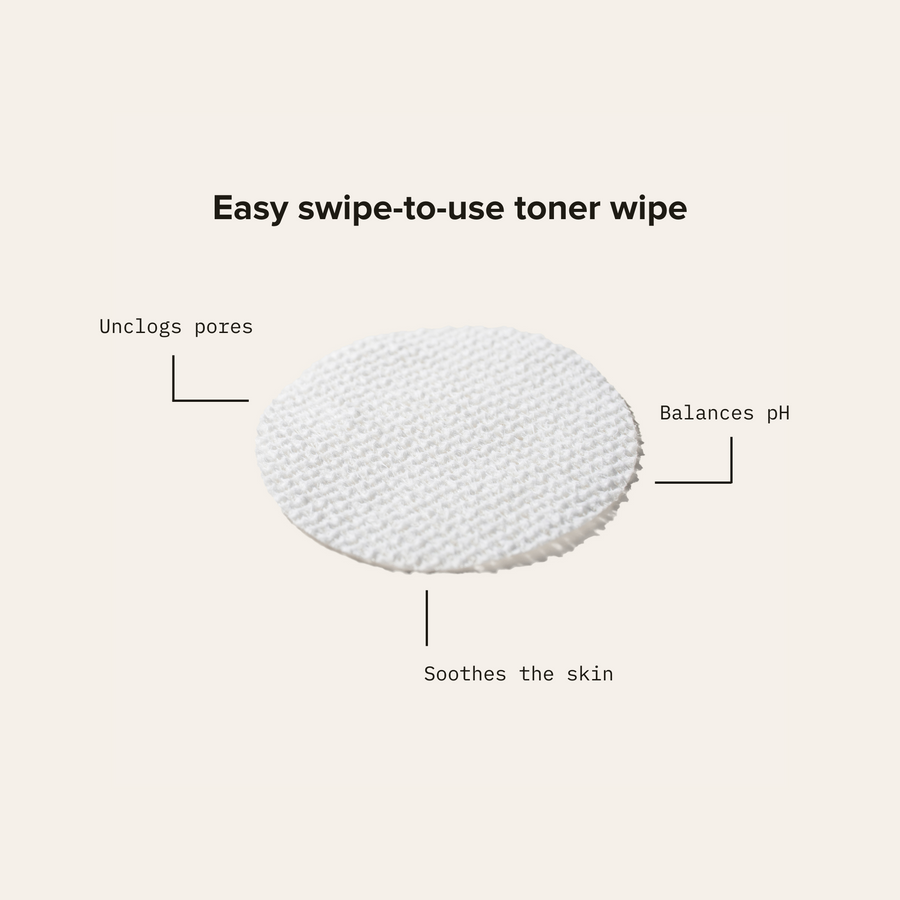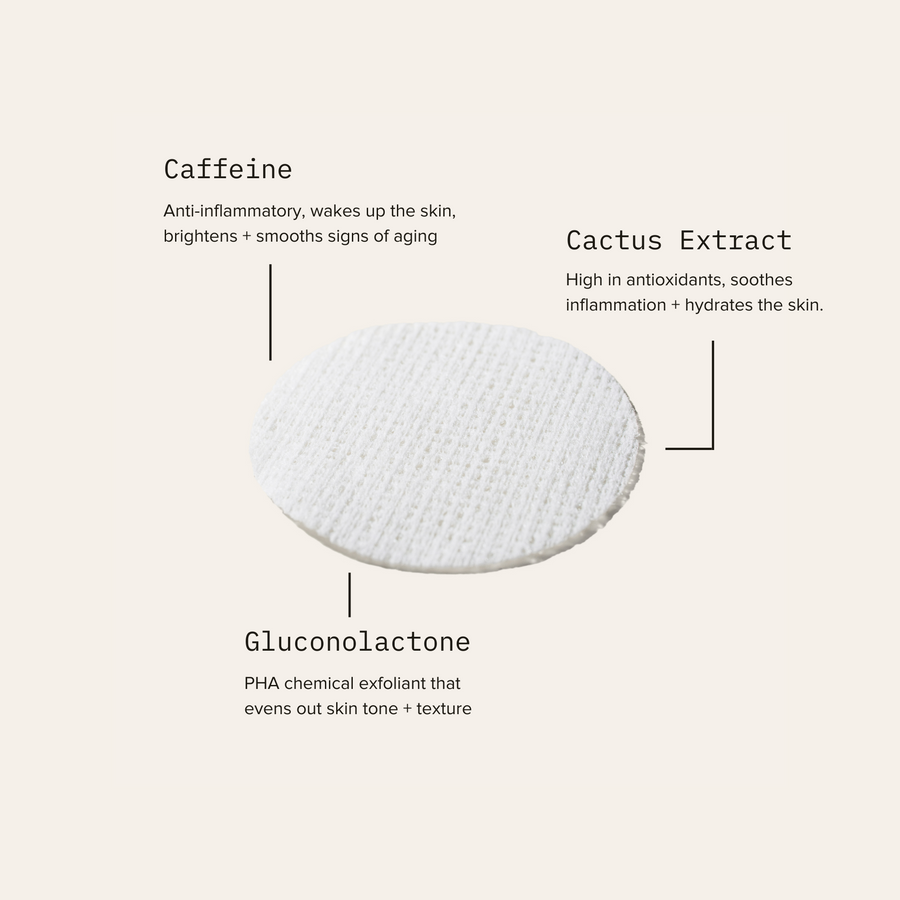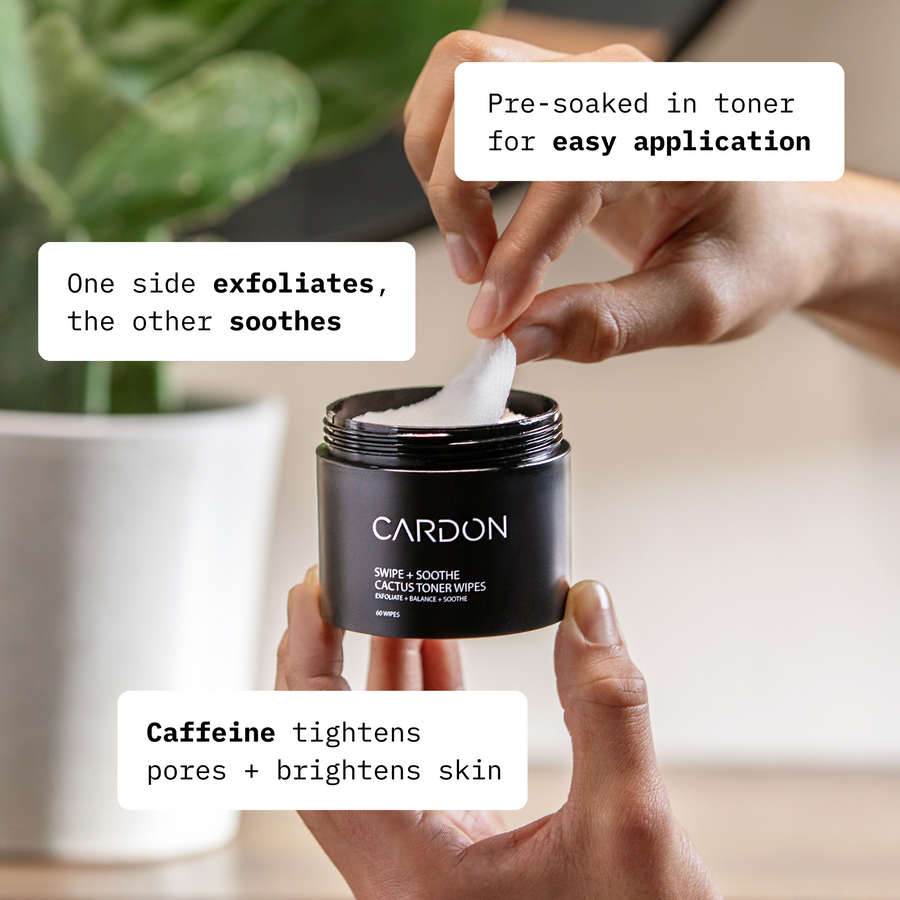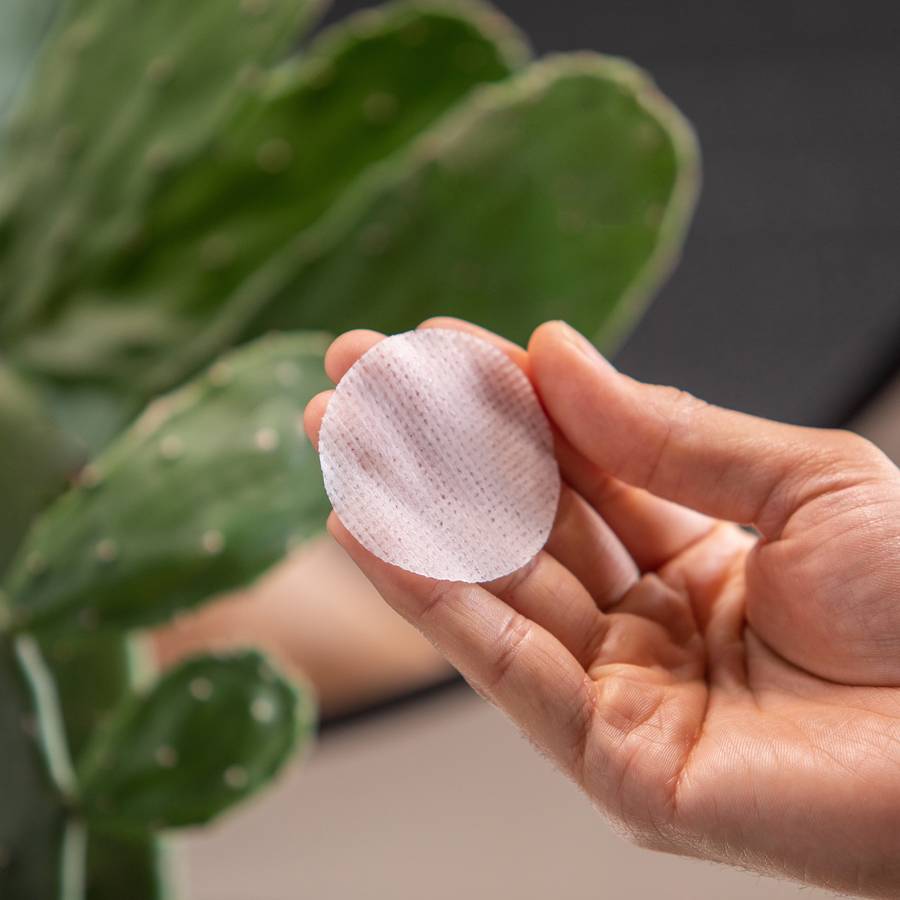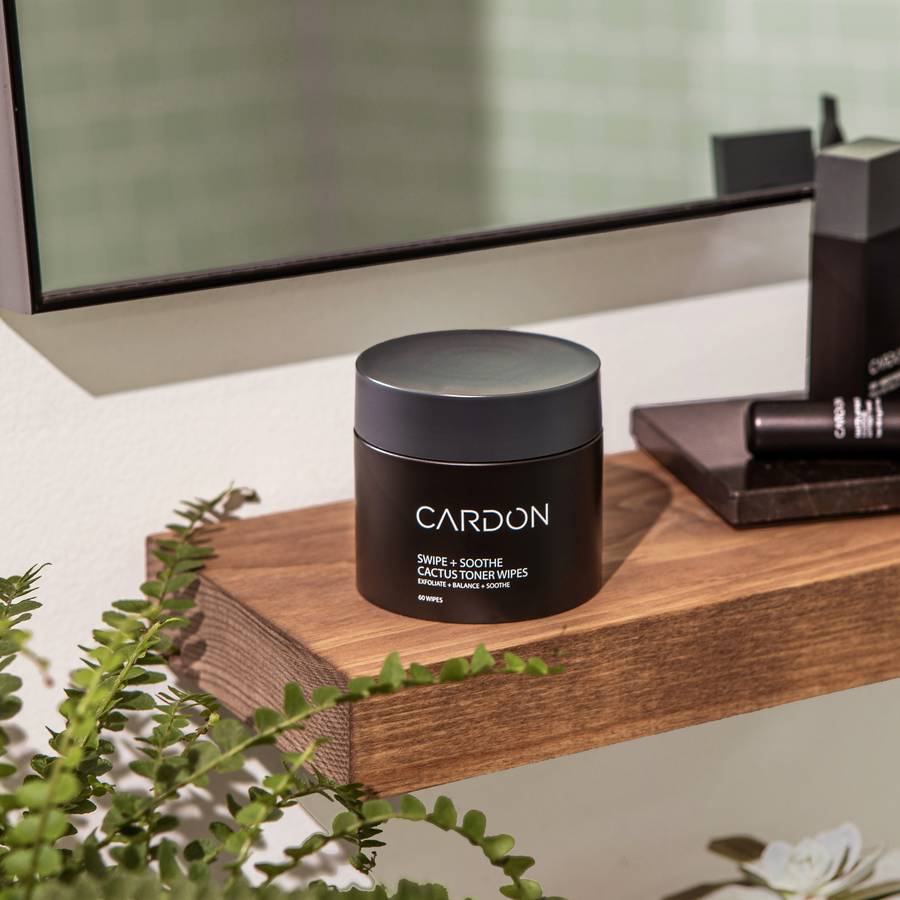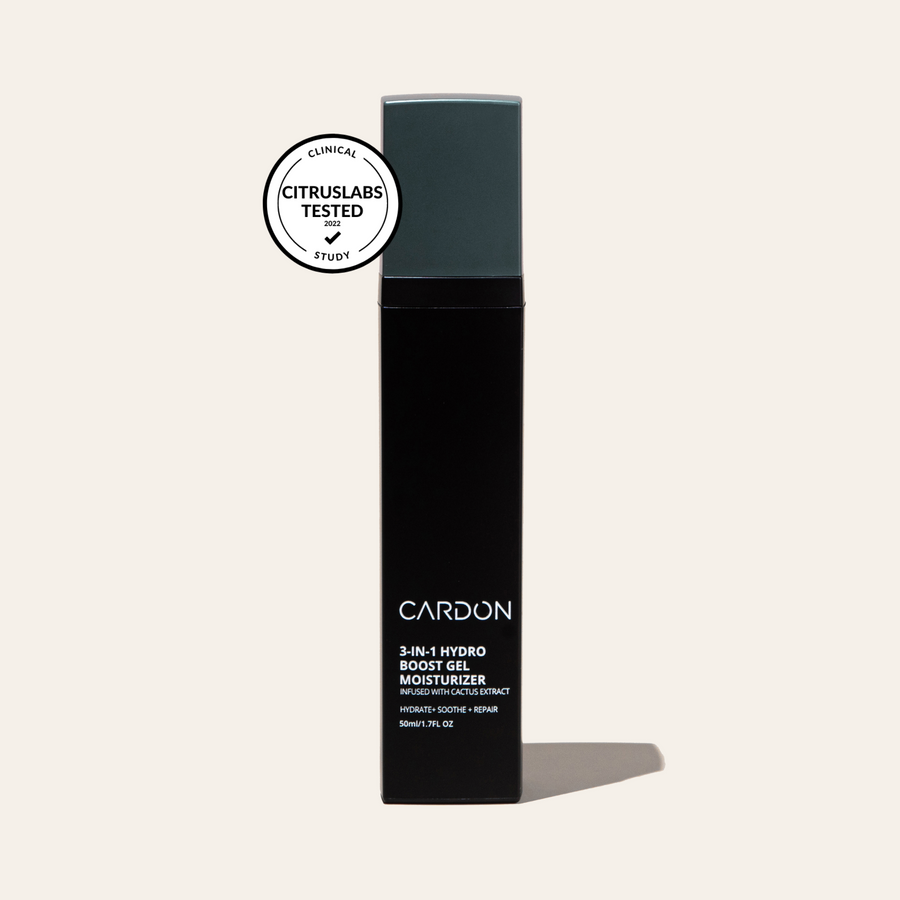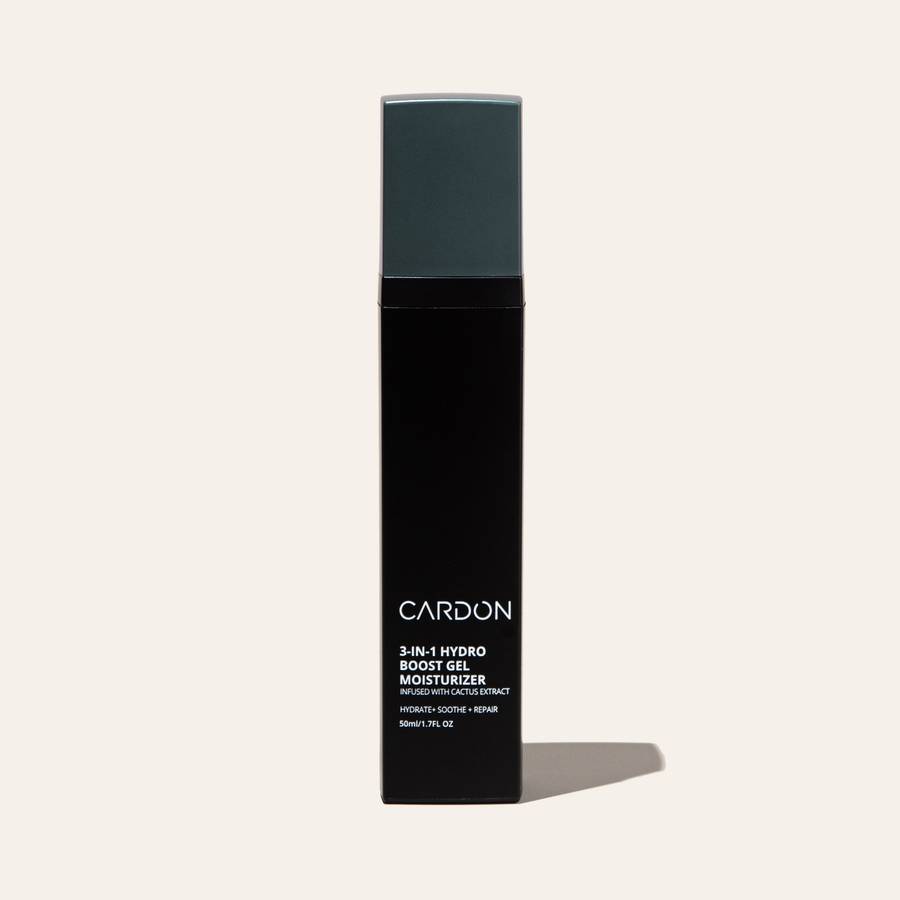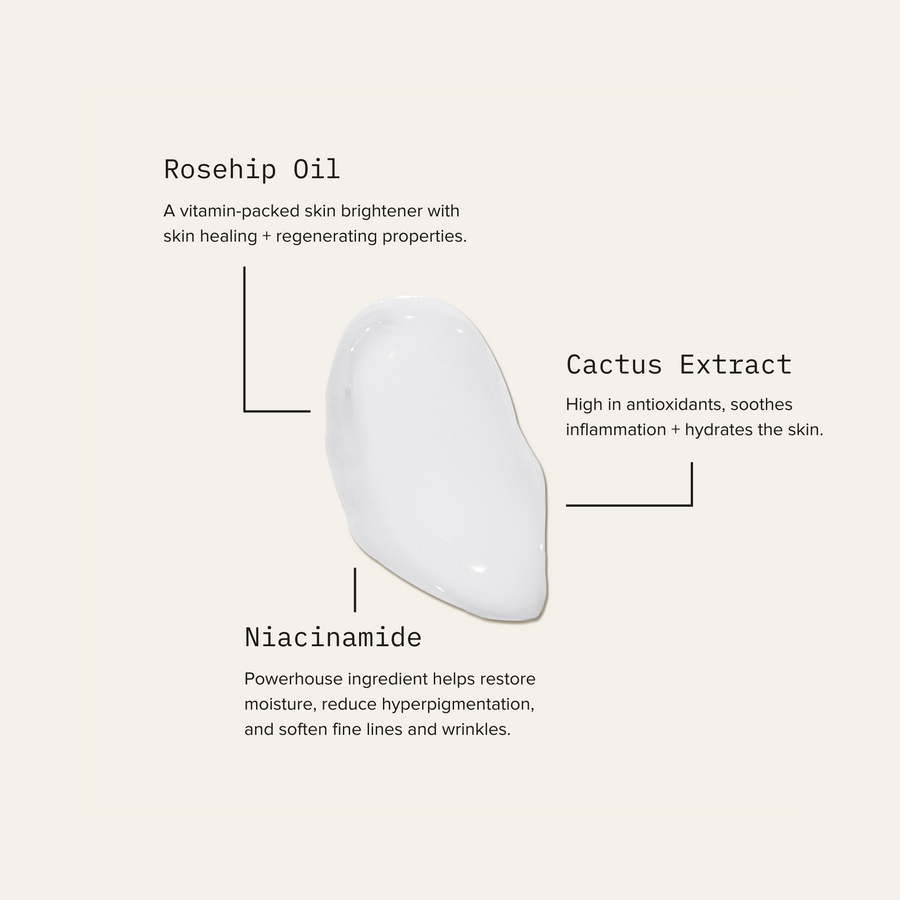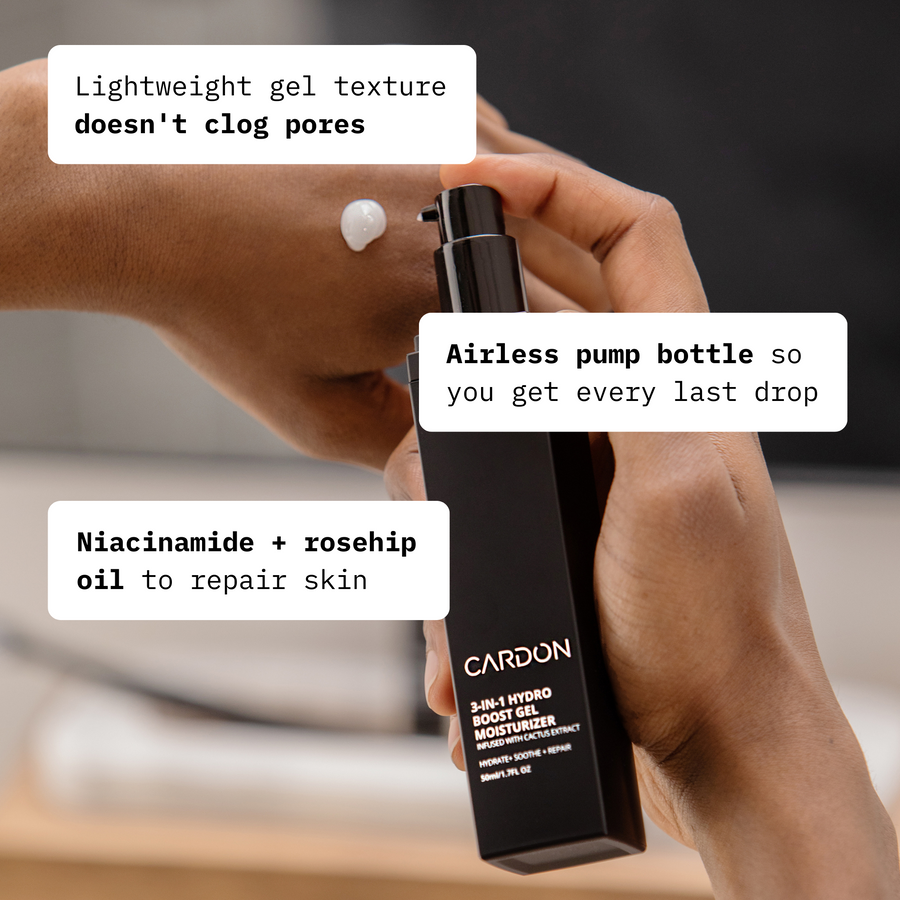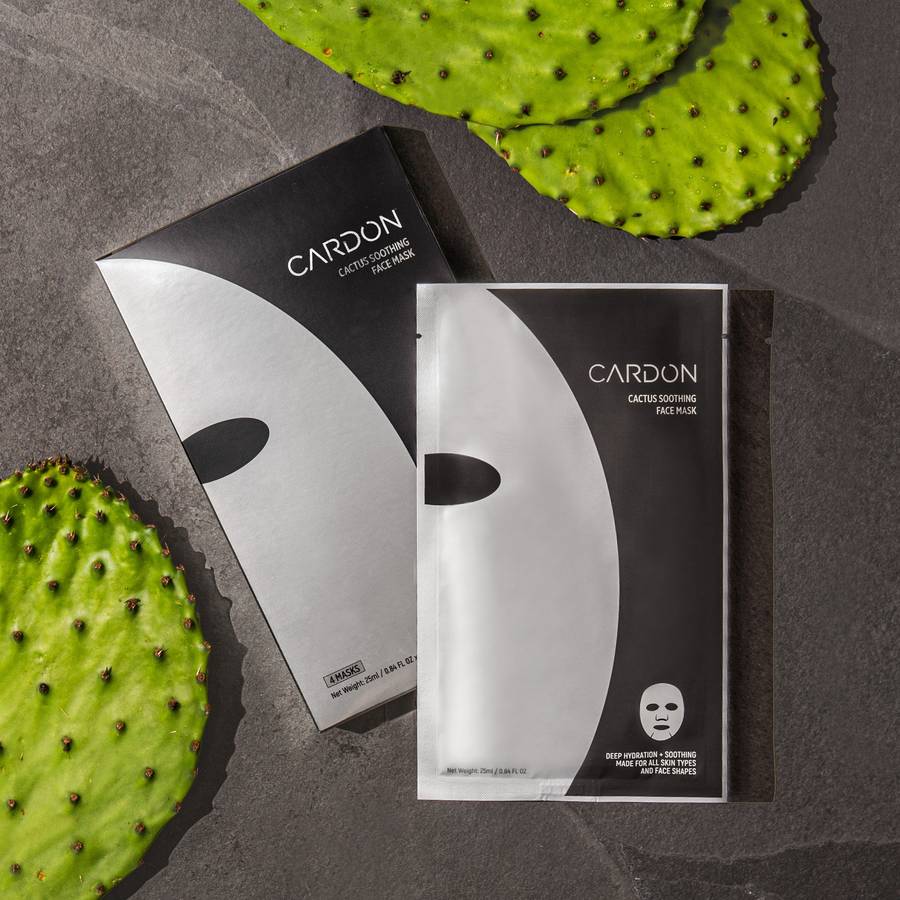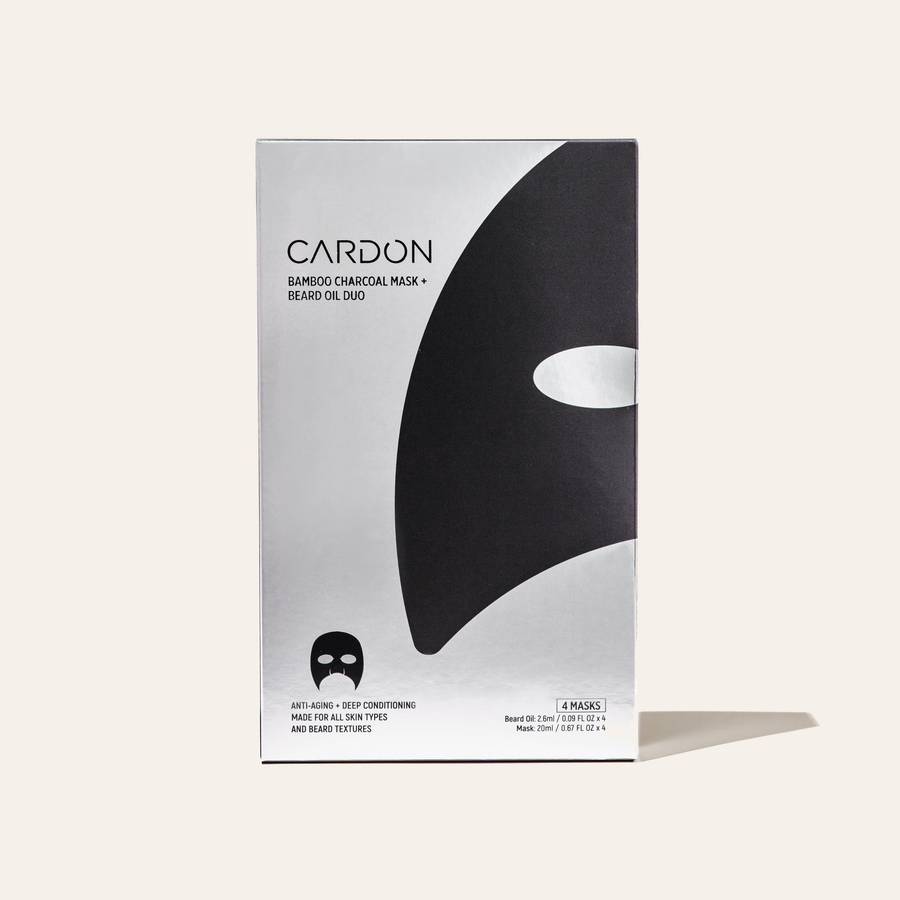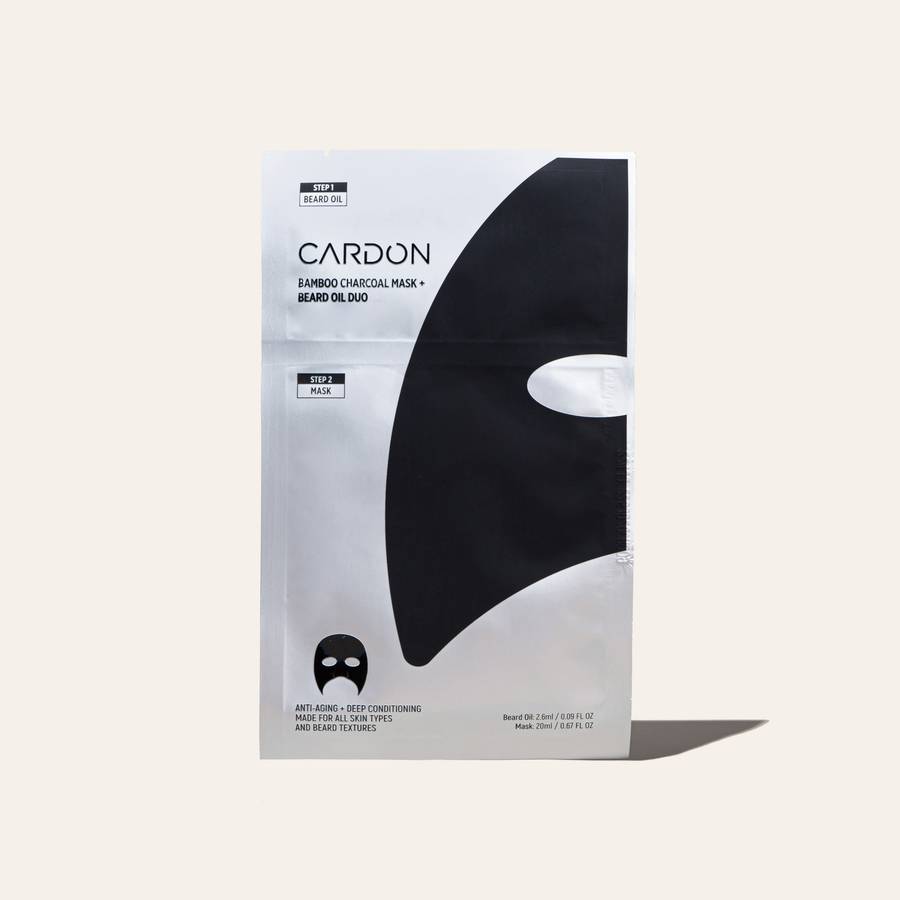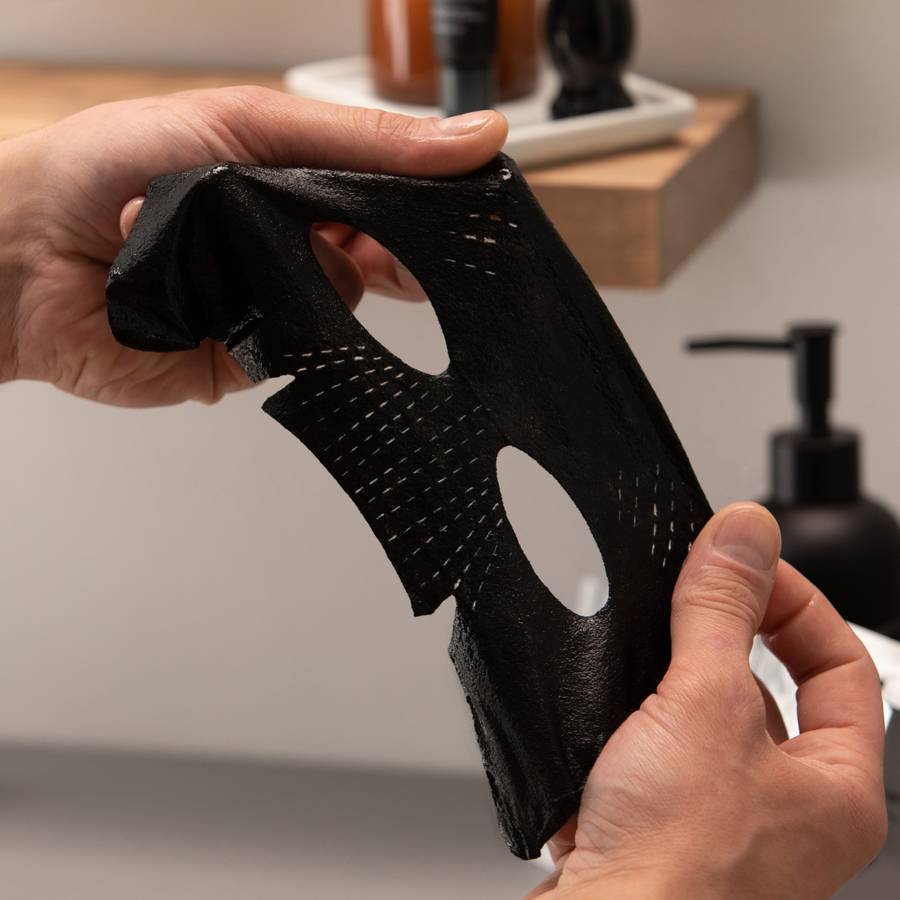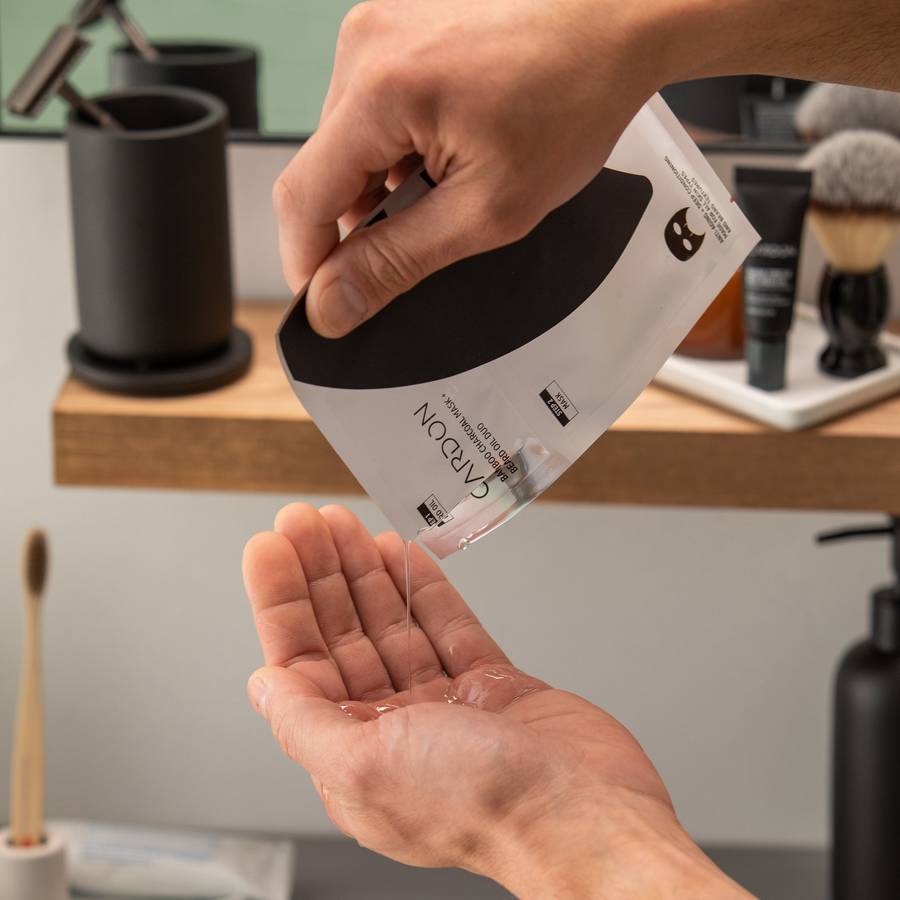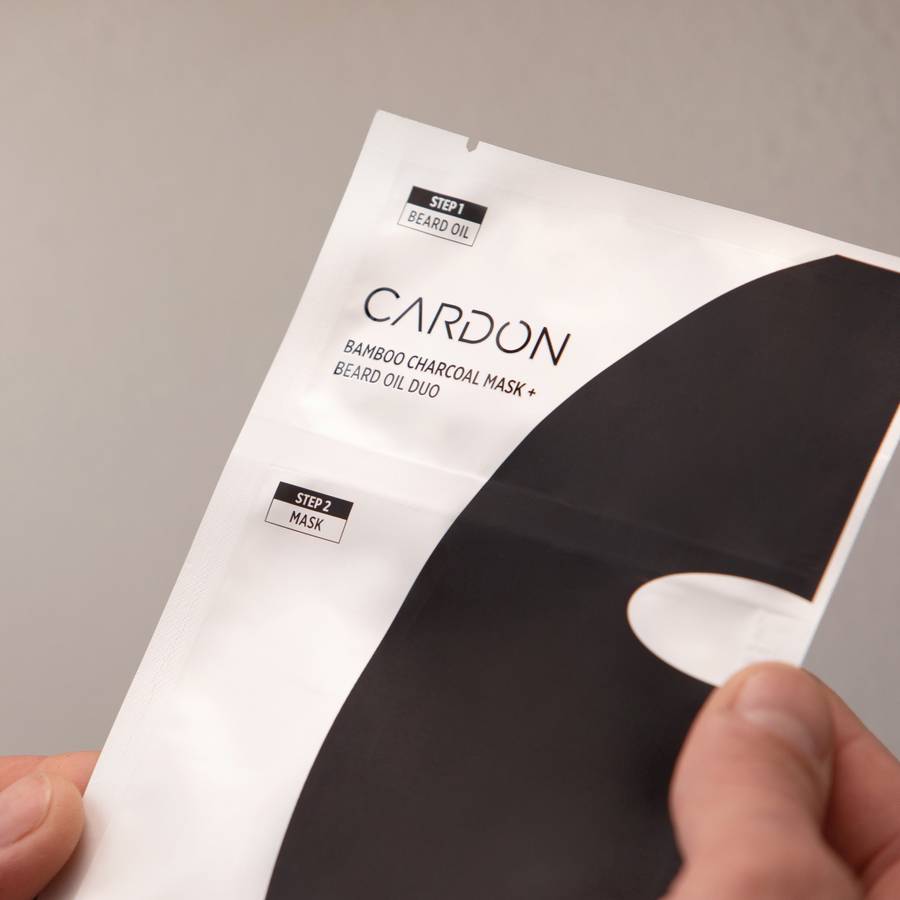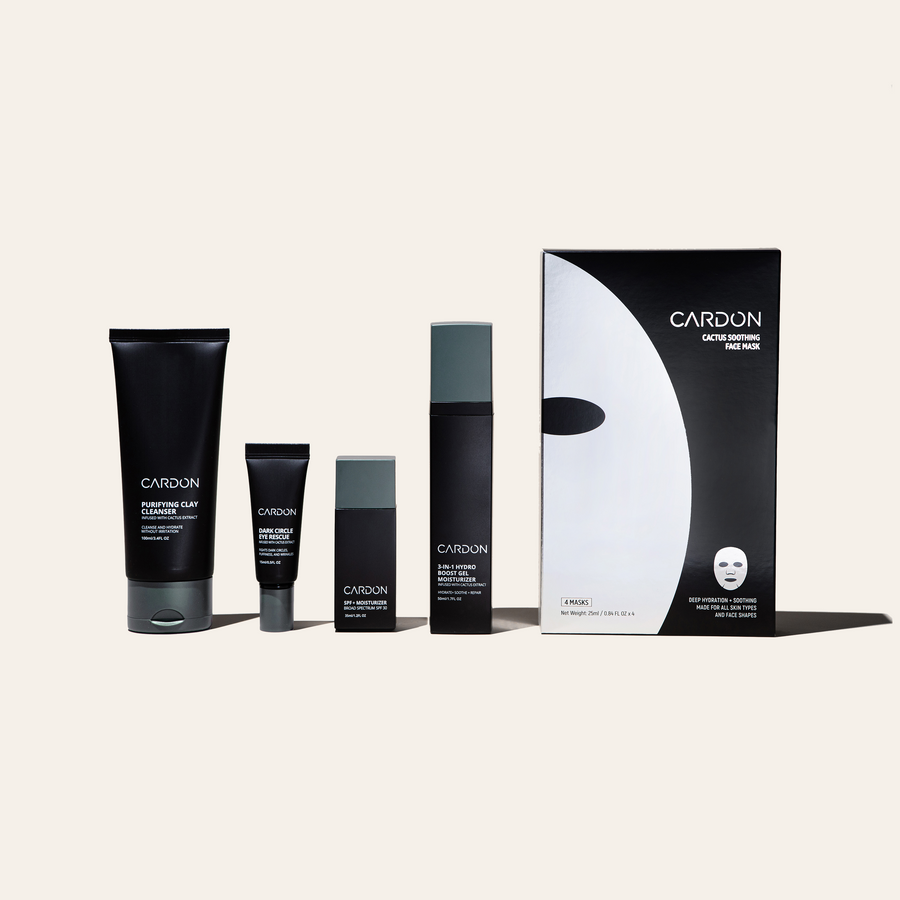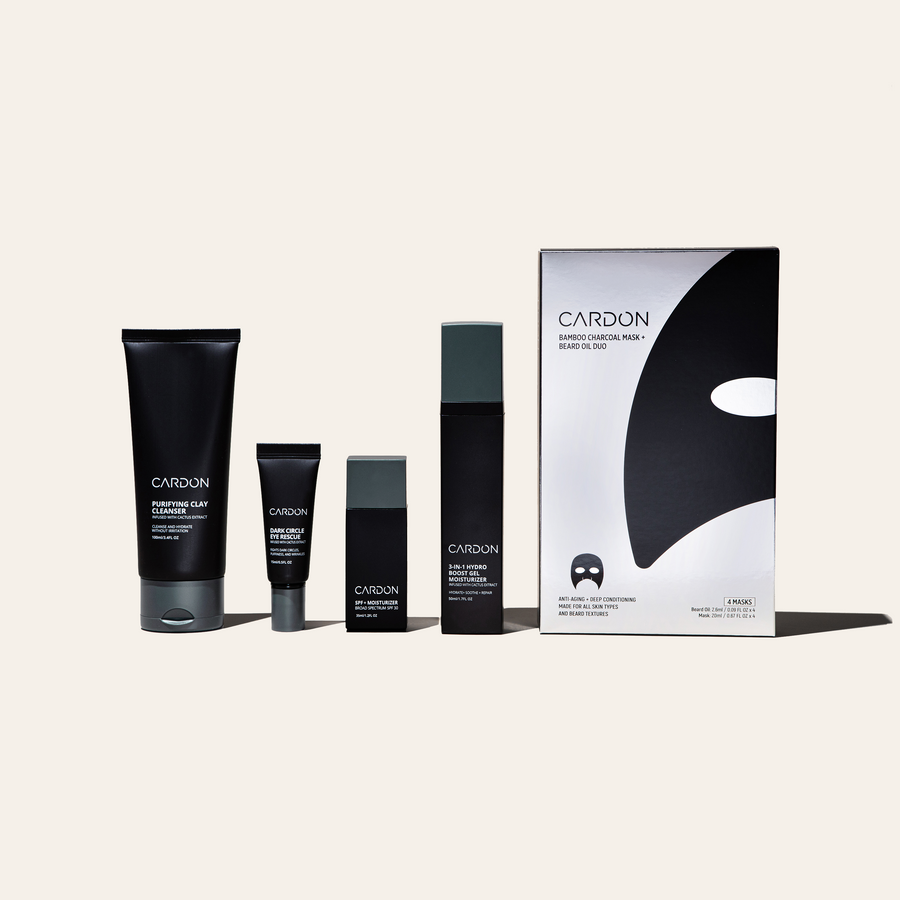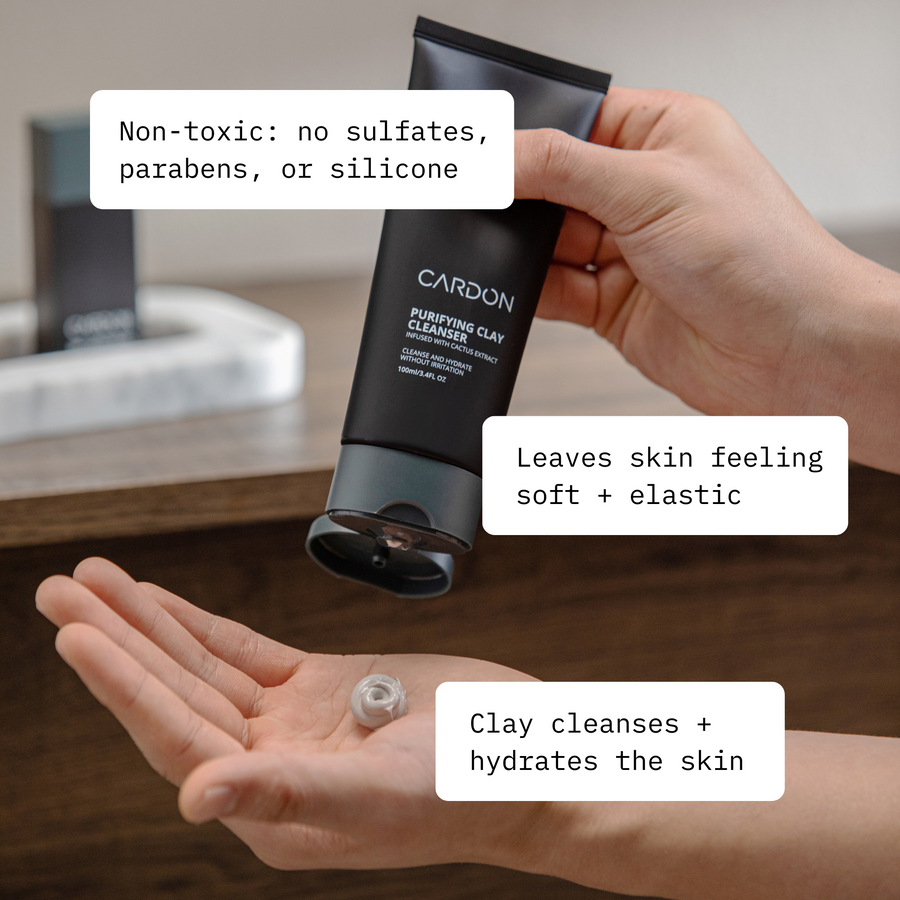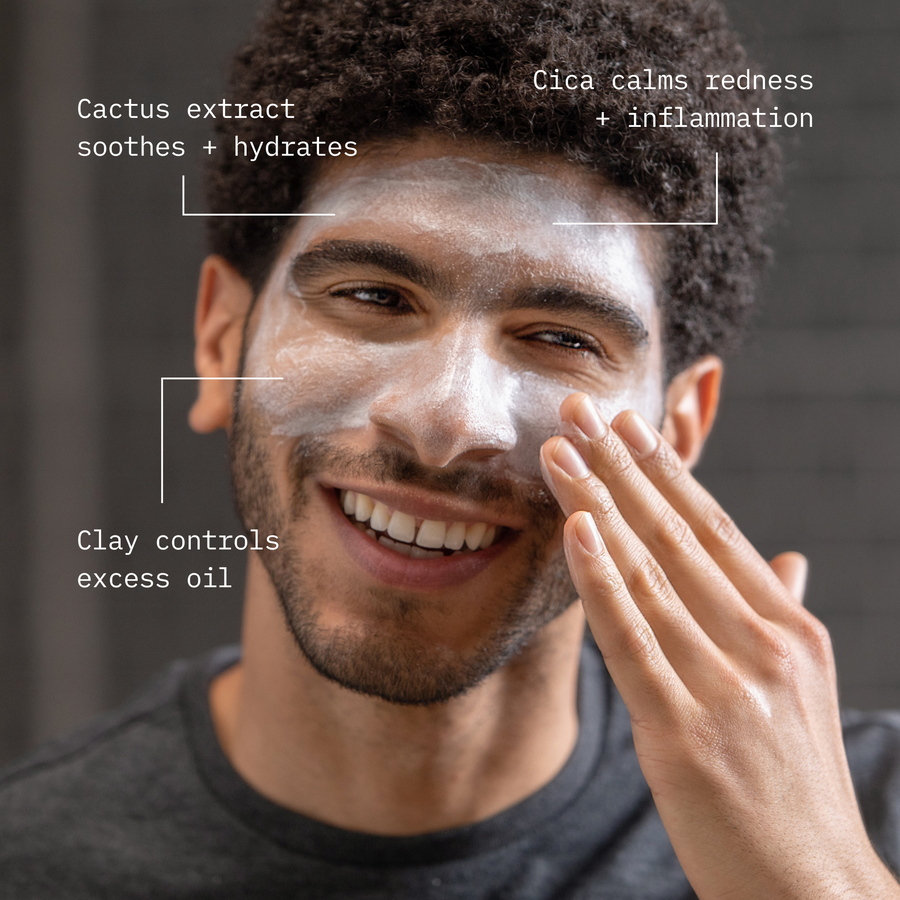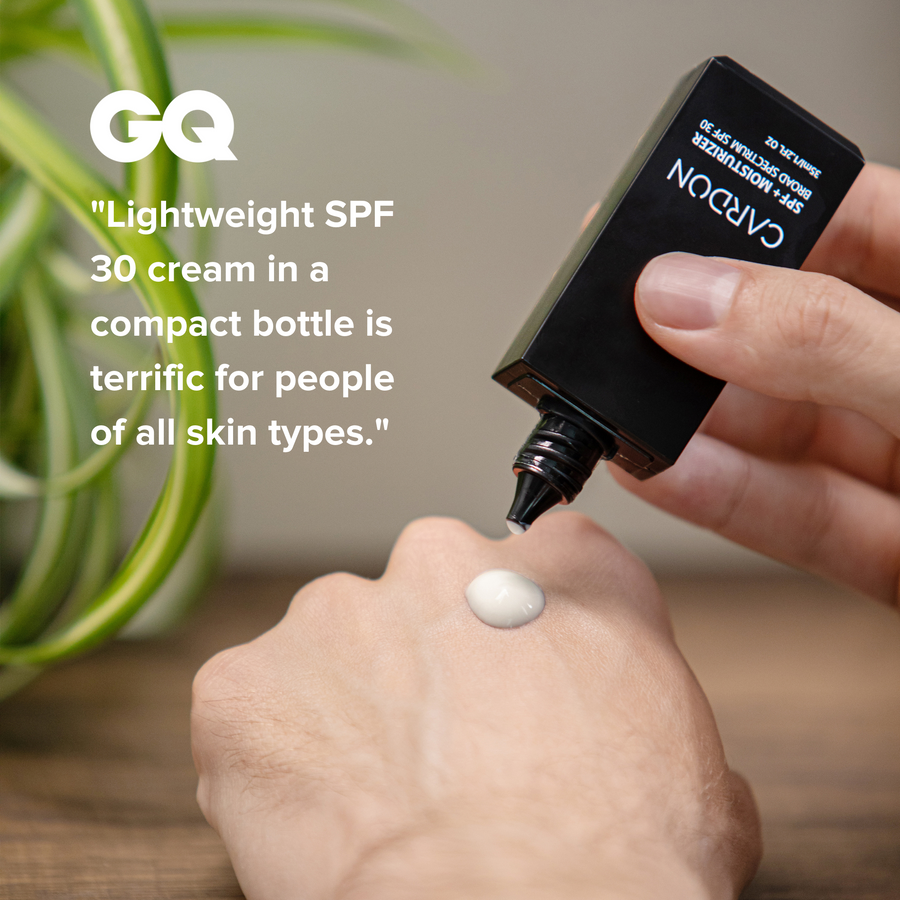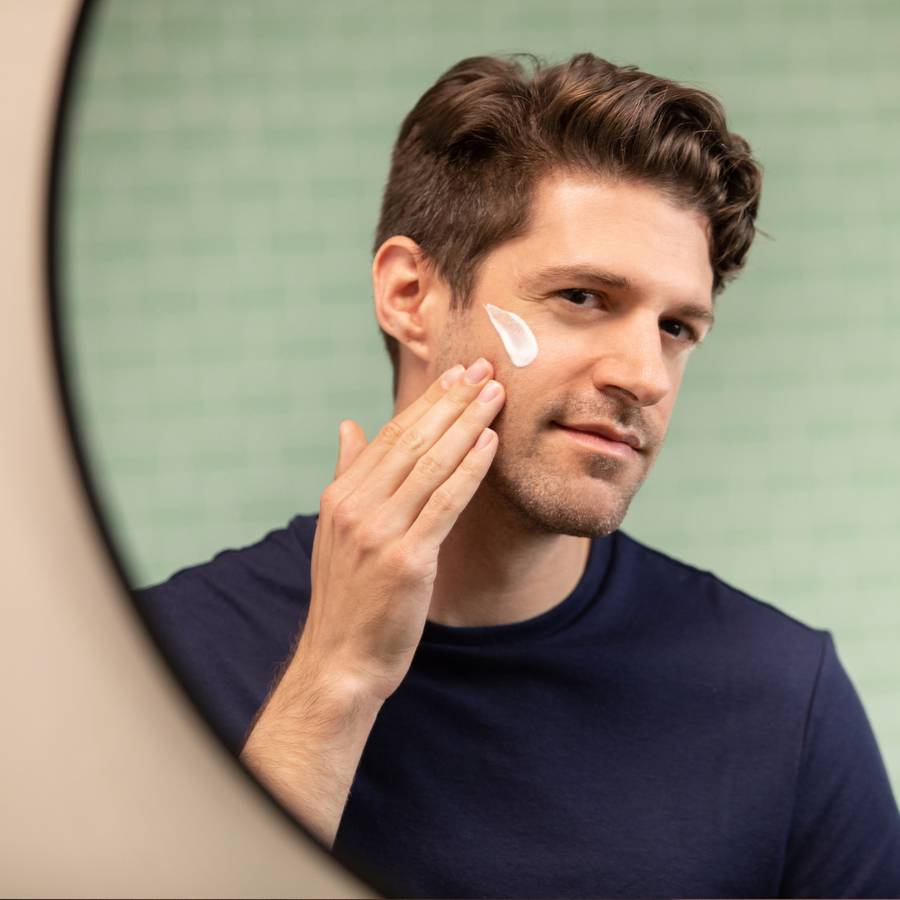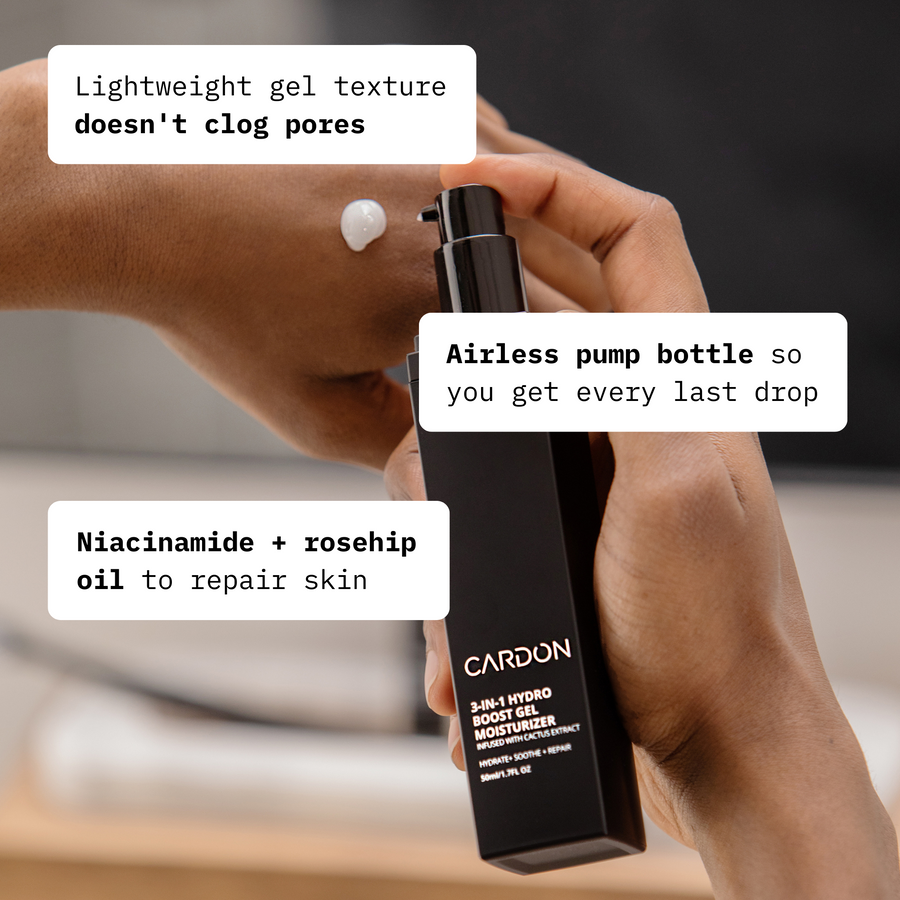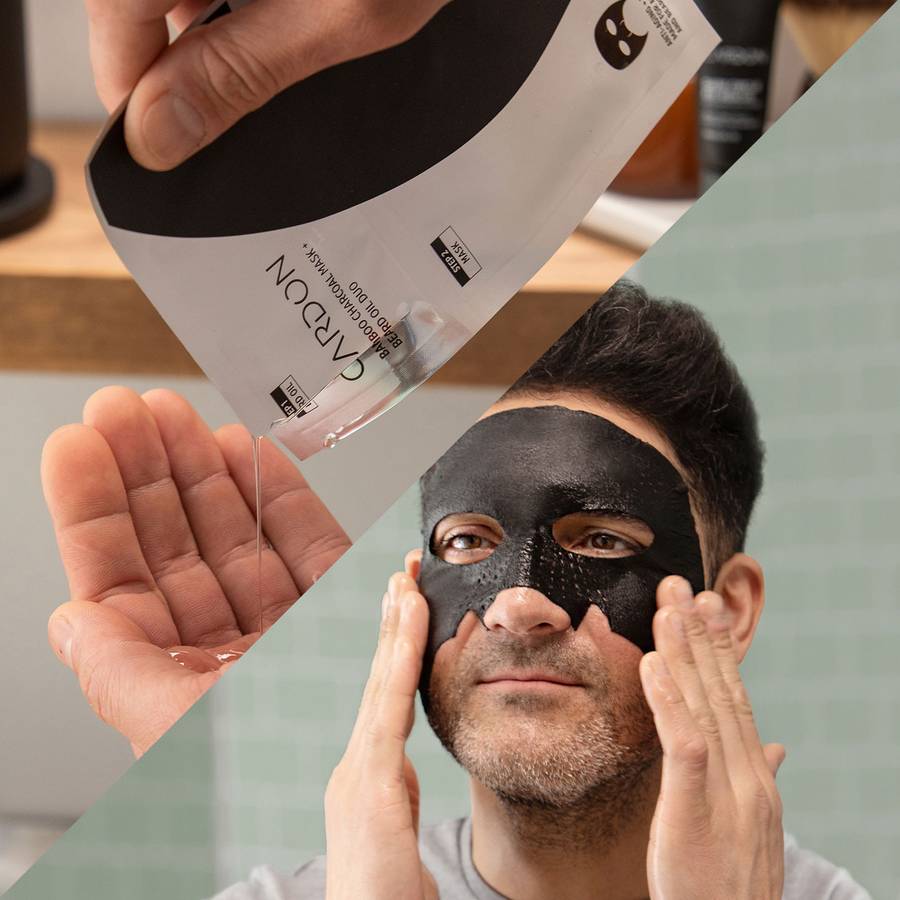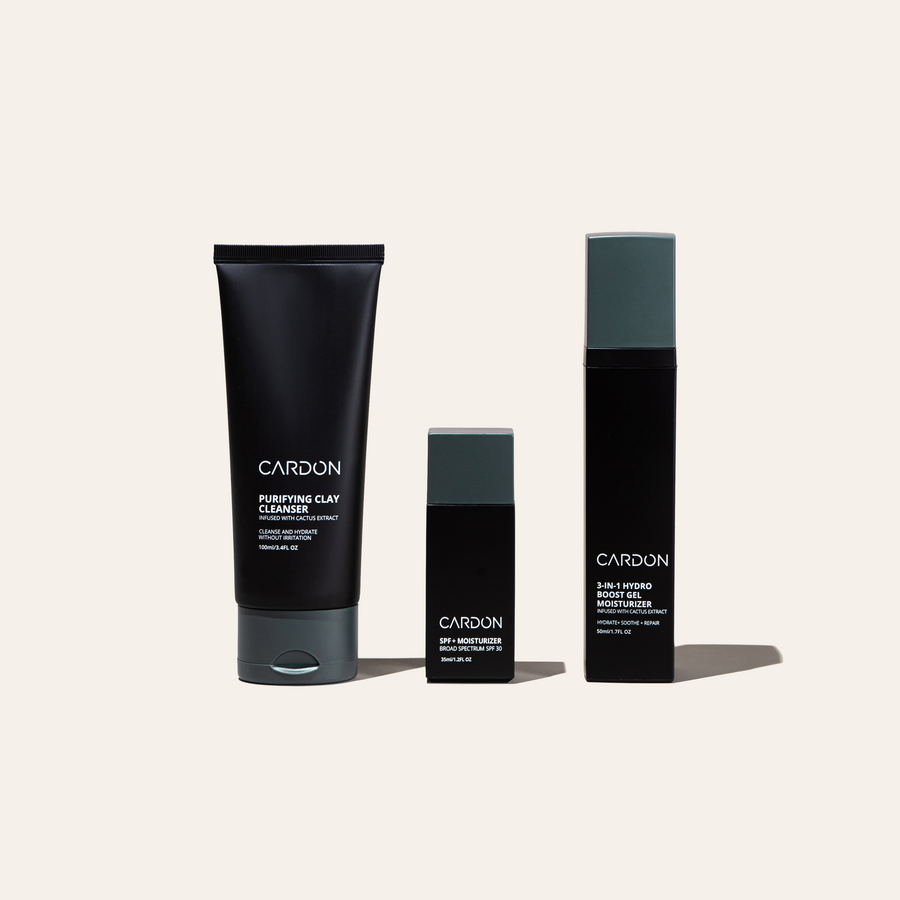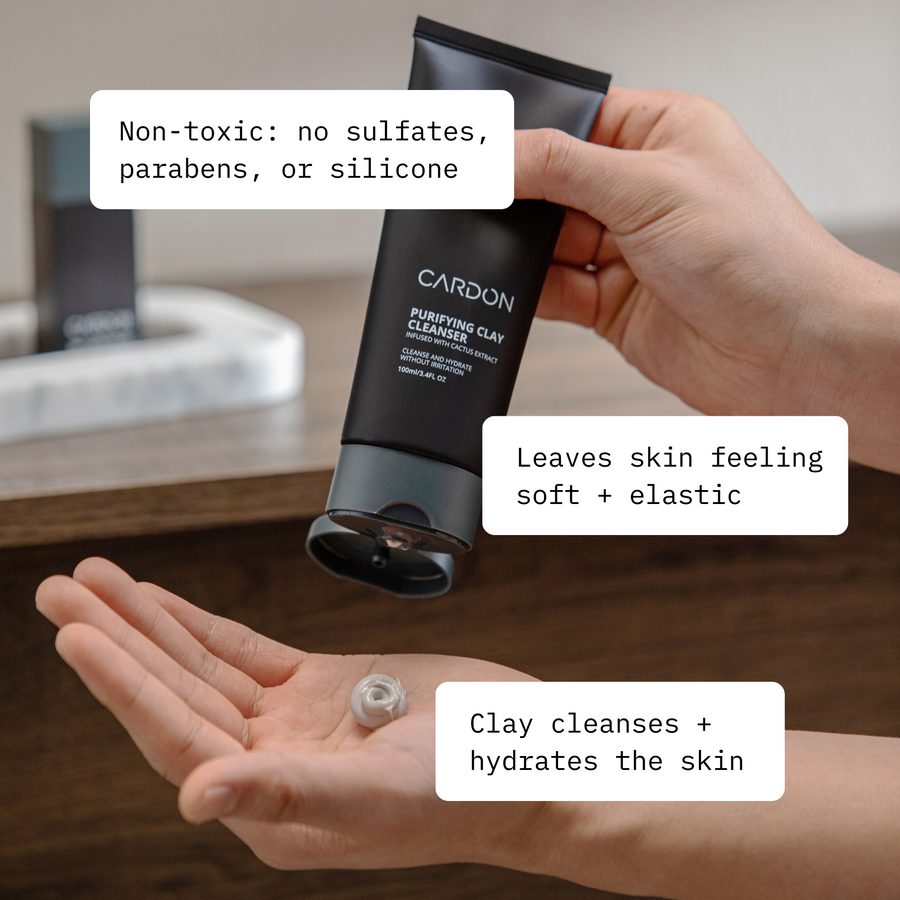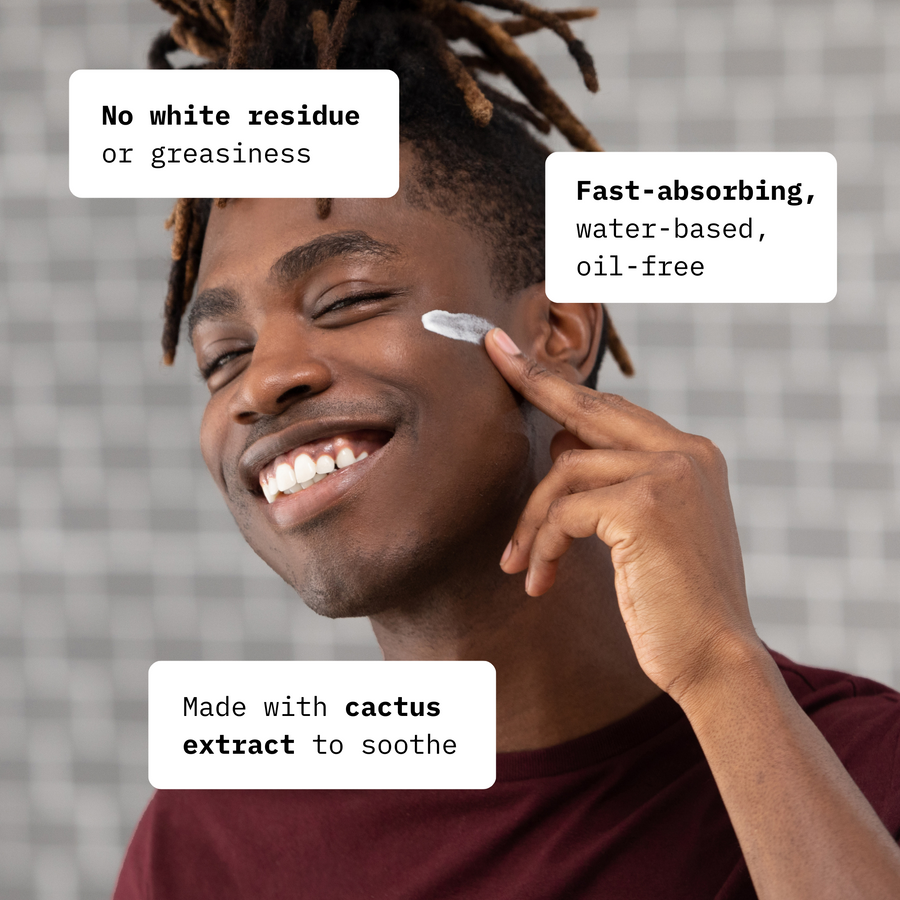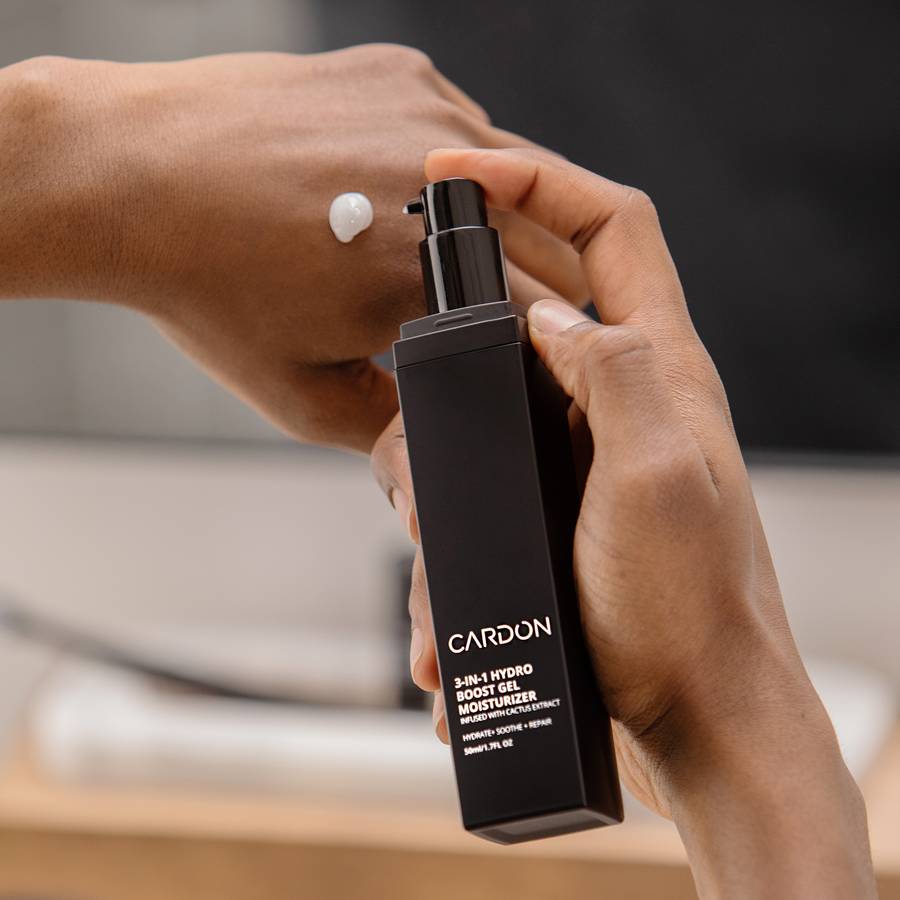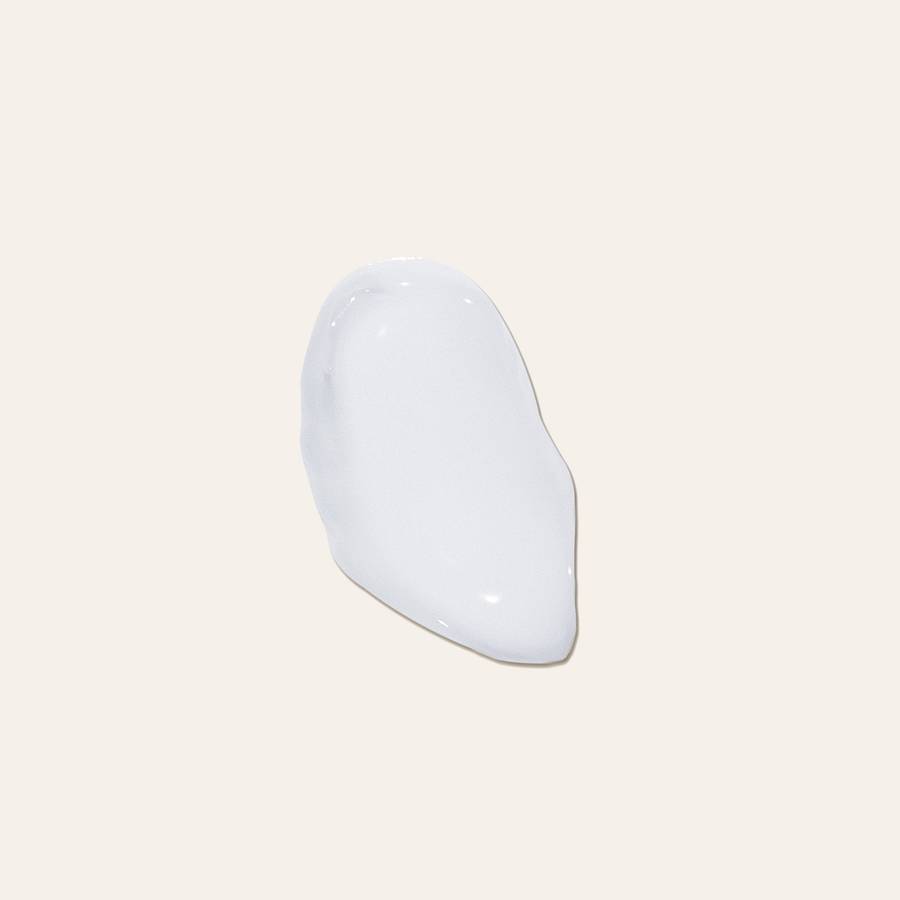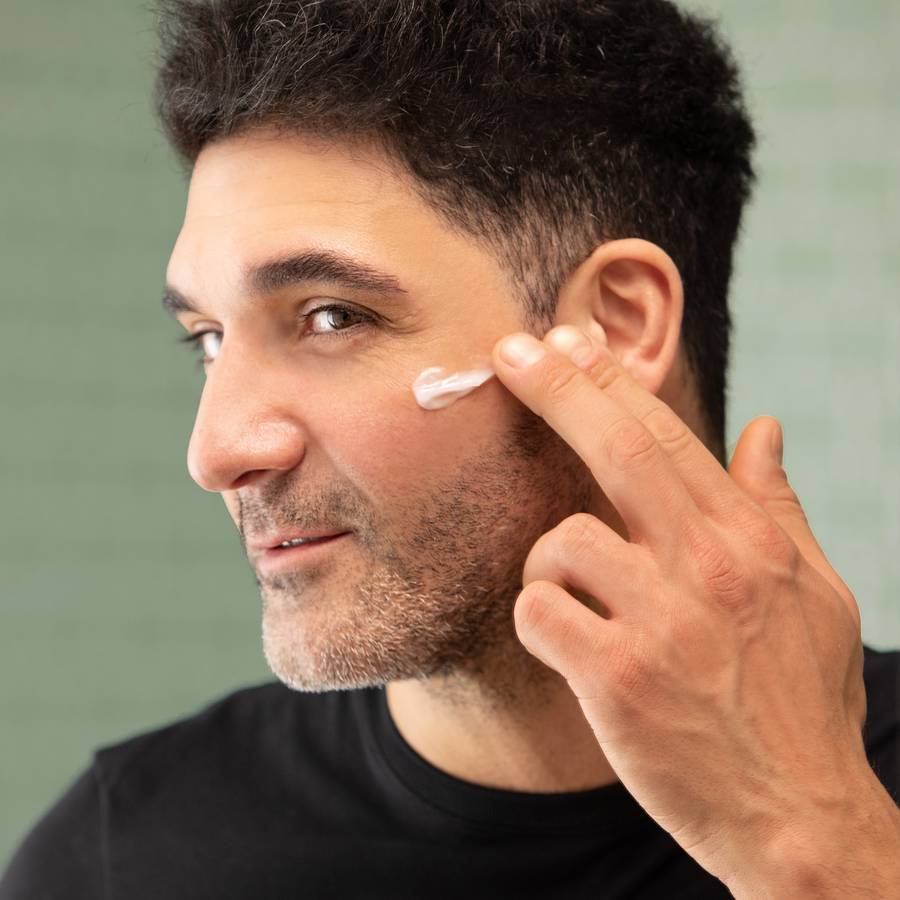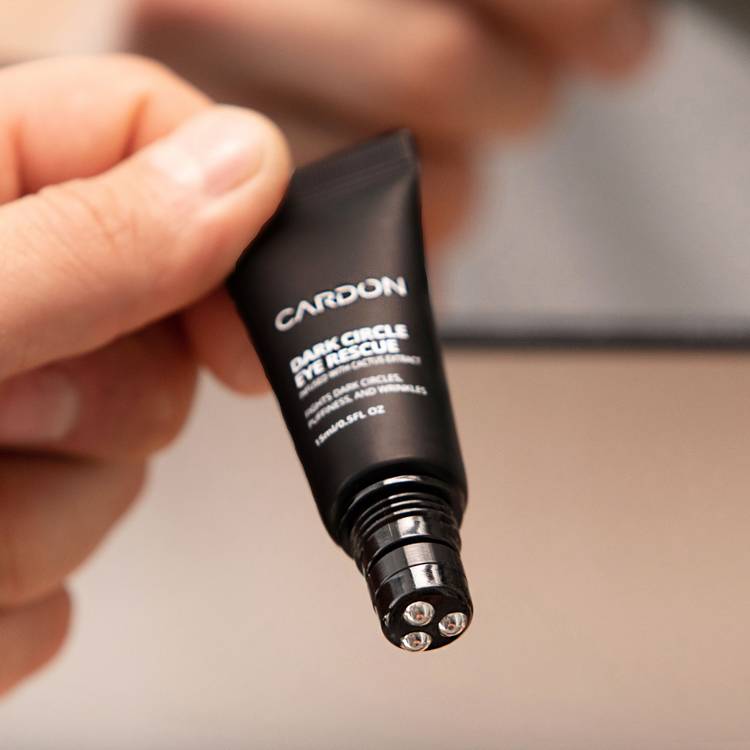Your Post-Movember Shave Guide

From October to March, men sprout more facial hair than the warmer half of the year. And it’s for obvious reasons: whether for the warmth itself, style reasons or charitable causes like Movember. Beards and mustaches, aside from transforming our appearance, also give our face added insulation from the elements. So, it’s likely you’ll be looking to shave off that facial hair eventually—as a post-Movember cleanup, freshening up before seeing family for the holidays or a pre-spring refresh. Here’s how to do it, while addressing the components that differ from a traditional shave.
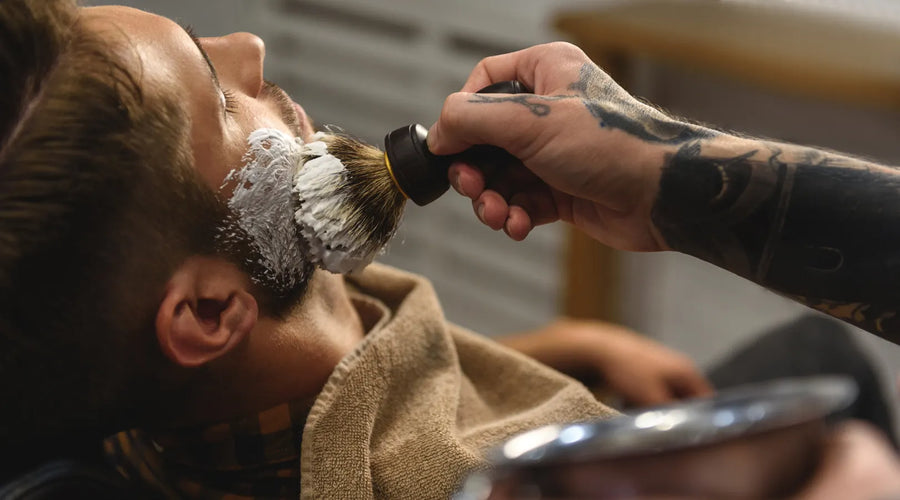
How to Shave Off Your Facial Hair
1. Start with the beard trimmer
First things first: You need to get that nest down to a stubble. Keep the guard on your beard trimmer, so that it acts like a comb and guides the hairs into the teeth. You can leave it on its lowest guard setting. There’s no need to do a second pass without the guard; you should have shaveable stubble with the lowest guard setting, and short-enough hairs that won’t drag or clog the razor blade.
2. Rinse, then assess the skin for dryness
You’ll want a good glimpse of your skin in its bare-faced state. So, rinse your face with lukewarm/warm water, to flush away the errant whiskers. Assess your face for dryness and flaky skin—since beard dandruff is real. It’s harder to keep the skin hydrated underneath your beard (that’s where beard oil and lightweight moisturizer come in handy). This step won’t significantly alter the rest of the regimen, aside from determining where to focus exfoliation efforts in Step 4.
3. Cleanse with warm water
Wash your face with a gentle, hydrating cleanser, and with lukewarm/warm water, to help soften the skin in preparation of the shave. This will yield a smoother, steadier shave, with far less irritation.
4. Exfoliate
After washing, grab a physical scrub or a wash cloth, and gently buff away any rough or flaky patches of skin. Be sure to exfoliate all over your cheeks, upper lips, and chin, just to give everything a general polishing. You will want to target problem areas a little longer, but keep a gentle hand regardless. This step is integral to shed dull and dead layers of skin that may have accumulated while you were growing your beard. Shedding that layer will make room for brighter, clearer skin and fend off irritation and breakouts.
5. Use a pre-shave oil
Most guys skip this step, but a nourishing pre-shave oil is the secret to your smoothest, closest shave. Before moving into the shaving steps themselves, it’s essential to prep the skin and hairs for an optimal shave. With your face freshly rinsed (with warm water), apply your pre-shave oil to condition the skin and create an invisible layer of defense between the razor and the skin. We prefer ingredients like jojoba or argan oils that help to alleviate shaving irritation, improve razor glide and boost skin resilience. A couple drops is usually sufficient. Some shaving agents even double as a pre-shave, if you leave them soaking on the skin for a minute or so, prior to the shave itself. (Read each label closely to see the various functions of each product you use.)
6. Apply shave cream
This is when you apply whichever shave agent you use—it may not be literal cream, but instead a gel, lotion, or oil. Apply it as directed by the brand, uniformly over the entire area.
7. Shave with a fresh, clean blade
Since your last shave was a month or more ago, it’s in your best interest to use a brand new, fresh razor. (The general rule of blade hygiene is to swap out the blades every 6-8 shaves or 2-3 weeks.) You want to use the sharpest blade possible, to prevent razor burn, ingrowns, razor dragging, and clogged pores (the last two of which are more common when you shave dry, flaky skin). Ideally, you’ll shave with the grain, to further avoid ingrowns (shaving against the grain will save you an extra day between shaves, but significantly increase the odds of ingrowns). The blade you use doesn’t make a big difference here, whether it’s safety razor or cartridge razor, unless you are ingrown prone and have thick, curly stubble; in that case, opt for a safety razor.
8. Rinse with cold water
Rinse everything away with cool water, to rid of debris (dead skin and stubble) and excess shave product. The cool water tightens the pores and prevents them from being a receptacle for bacteria and microscopic debris, which quickly clogs and irritates.
9. Apply toning, soothing post-shave products
Shaved skin is stressed skin. After taking a razor to your face, your skin is vulnerable and thirsting for repair. Apply a pH-balancing toner and a soothing + restoring post-shave hydrator (both with an irritation-calming ingredient like cactus extract). These products help guard against skin irritation, redness and inflammation while assisting its rebound from the many previous steps, which left the face exhausted and vulnerable.
10. Prioritize moisture moving forward
Be generous with that moisturizer, to help skin recover from dryness (and possible flaking). You can use exfoliating toner wipes to shed dead skin, too, but it’s the moisturizing that will shield your skin from winter elements, and prevent the problem from happening again—especially considering you don’t have a furry shield anymore. If it’s not one problem in winter (the beard preventing you from moisturizing skin), it’s something else (the skin being left exposed to dry, cold air). Stay proactive, and you’ll keep things smooth, soothed, and under control.
Shop the collection

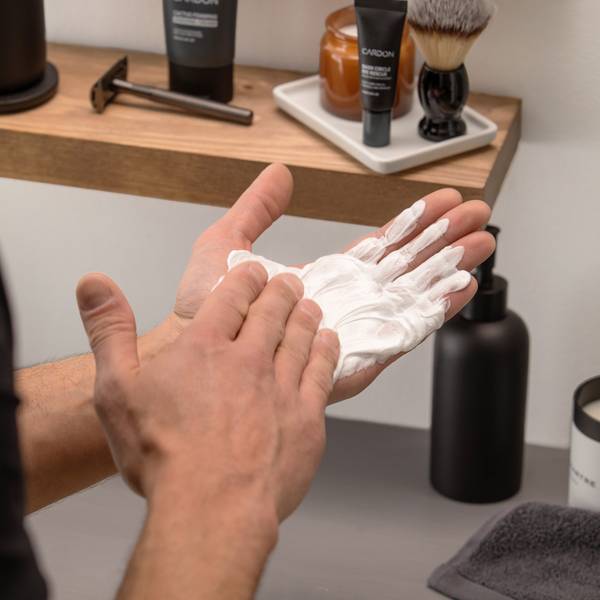
Cactus Foaming Shaving Cream
good for:
This bathroom cabinet staple is a cut above the rest. The Cactus Foaming Shaving Cream for men delivers a close, comfortable shave every time—without having to worry about nicks, razor burns, irritation, and ingrowns.
Our rich foam uses Cactus Extract and Chamomile to create a cushion-like layer to soothe the skin. Plus, you’ll shave some time since this also doubles as a face cleanser.
Due to demand, this product is temporarily out of stock. Click "Notify Me" below to be the first to know when it's back!
Cactus Foaming Shaving Cream
good for:
This bathroom cabinet staple is a cut above the rest. The Cactus Foaming Shaving Cream for men delivers a close, comfortable shave every time—without having to worry about nicks, razor burns, irritation, and ingrowns.
Our rich foam uses Cactus Extract and Chamomile to create a cushion-like layer to soothe the skin. Plus, you’ll shave some time since this also doubles as a face cleanser.
Due to demand, this product is temporarily out of stock. Click "Notify Me" below to be the first to know when it's back!
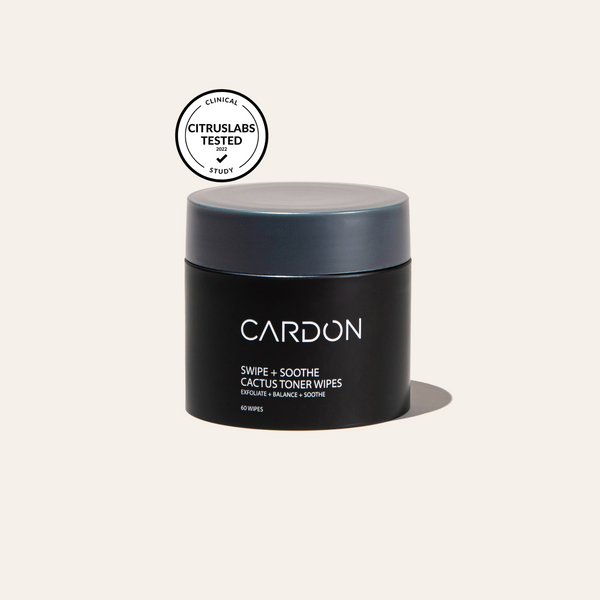
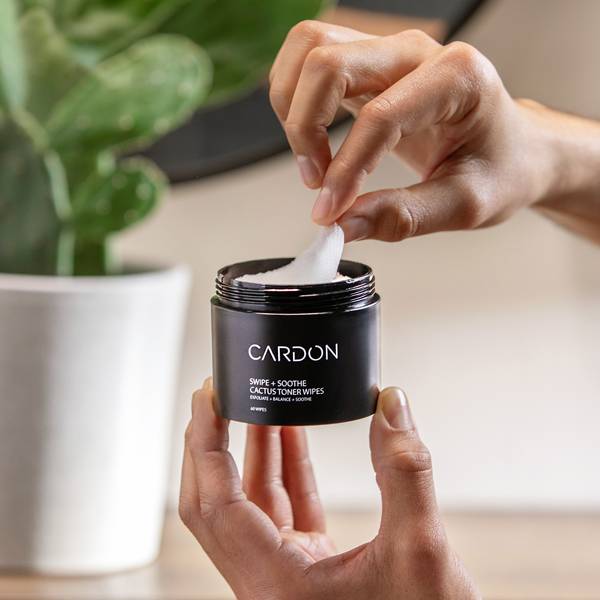
Exfoliating Facial Toner Wipes
good for:
After a long, busy day you just want to sit back, relax, and crack open—our biodegradable Exfoliating Facial Toner Wipes.
Wipe the stress and grime away with our Exfoliating Facial Toner Wipes, which use PHAs and caffeine to unclog pores, balance pH, and soothe the skin all in one easy step. No water needed.
“These wipes are amazing and have visibly helped with my uneven skin tone and the dual side textures really help gently exfoliate at the same time. My skin has never felt and looked so great.” - Kevin G.
Exfoliating Facial Toner Wipes
good for:
After a long, busy day you just want to sit back, relax, and crack open—our biodegradable Exfoliating Facial Toner Wipes.
Wipe the stress and grime away with our Exfoliating Facial Toner Wipes, which use PHAs and caffeine to unclog pores, balance pH, and soothe the skin all in one easy step. No water needed.
“These wipes are amazing and have visibly helped with my uneven skin tone and the dual side textures really help gently exfoliate at the same time. My skin has never felt and looked so great.” - Kevin G.
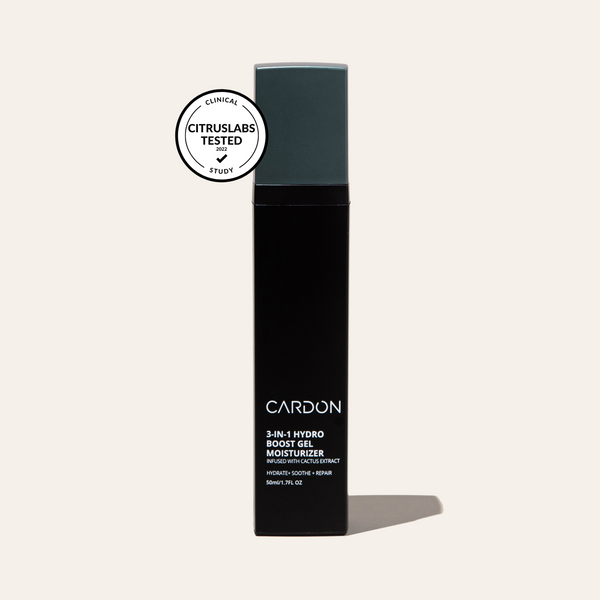

Hydro Boost Gel Moisturizer
good for:
Like a night cap for your skin, our Hydro Boost Gel Moisturizer is the ideal way to finish your evening.
This 3-in-1 gel moisturizer uses Cactus Extract and Rosehip Oil to put in the work while you snooze—hydrating, soothing, and repairing your skin all night long.
“This easily became part of my nightly routine. I've started to notice my face looking healthier and smoother. As a 32 y/o, you start to notice wrinkles creeping in, this helps me keep them at bay.” - Andrew S.
Hydro Boost Gel Moisturizer
good for:
Like a night cap for your skin, our Hydro Boost Gel Moisturizer is the ideal way to finish your evening.
This 3-in-1 gel moisturizer uses Cactus Extract and Rosehip Oil to put in the work while you snooze—hydrating, soothing, and repairing your skin all night long.
“This easily became part of my nightly routine. I've started to notice my face looking healthier and smoother. As a 32 y/o, you start to notice wrinkles creeping in, this helps me keep them at bay.” - Andrew S.

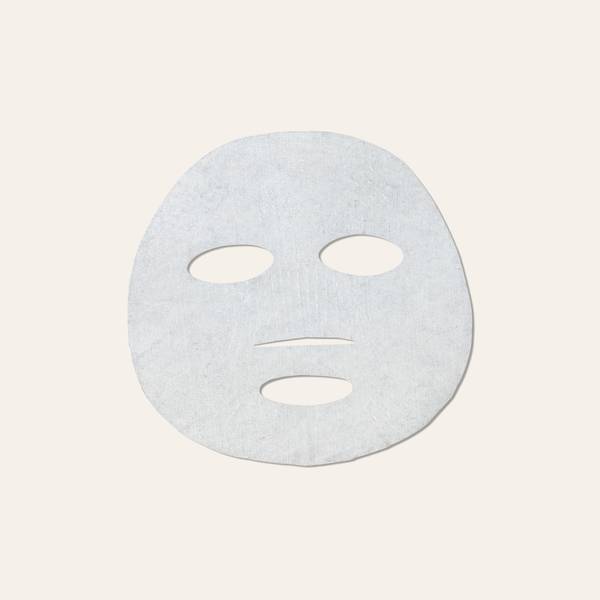
Cactus Soothing Face Mask
good for:
Everyone deserves some self-care time—may we recommend Cactus Soothing Face Mask and chill?
This immediate hydration boost is supercharged with healing ingredients like Cactus Extract and Cica to soothe redness and irritation while reducing fine lines. Perfect for a post-shave treatment or whenever you need a moment for you.
“Stress and late nights working have left my skin looking a bit rough, but this mask was perfect for some at-home spa relaxation. My skin definitely looks a lot more moisturized and refreshed.” - Melody C.
Cactus Soothing Face Mask
good for:
Everyone deserves some self-care time—may we recommend Cactus Soothing Face Mask and chill?
This immediate hydration boost is supercharged with healing ingredients like Cactus Extract and Cica to soothe redness and irritation while reducing fine lines. Perfect for a post-shave treatment or whenever you need a moment for you.
“Stress and late nights working have left my skin looking a bit rough, but this mask was perfect for some at-home spa relaxation. My skin definitely looks a lot more moisturized and refreshed.” - Melody C.
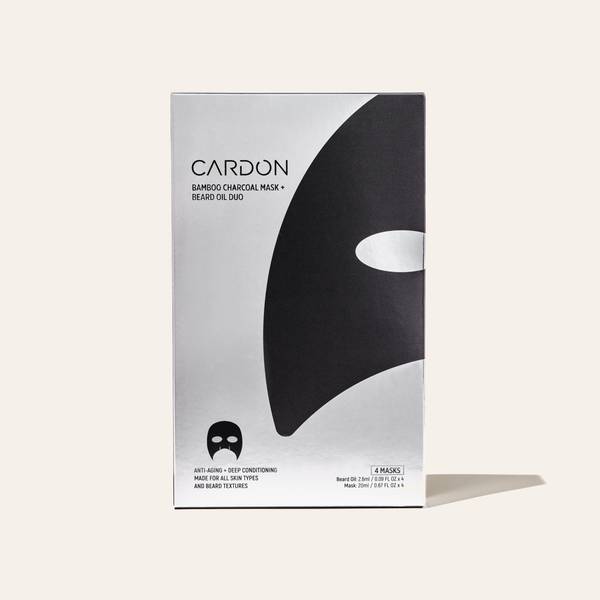
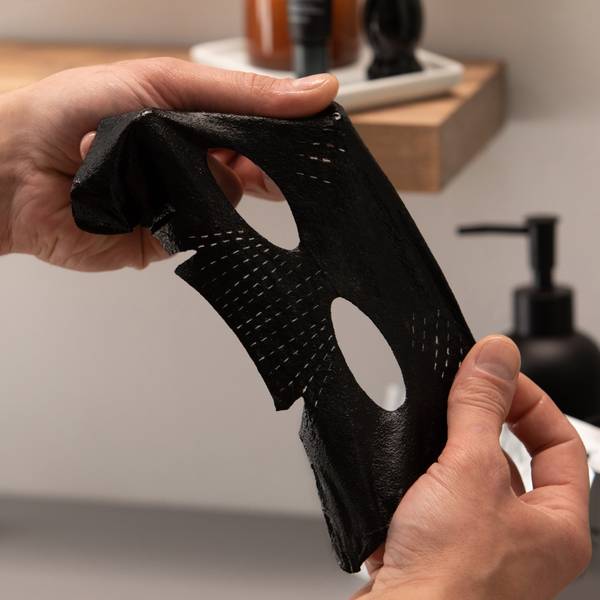
GIFT
Bamboo Charcoal Sheet Mask + Beard Oil
good for:
Often imitated, never duplicated, this innovative sheet mask is the first of its kind and an Ask Men Grooming award winner in the Best Sheet Mask category!
Half mask, half beard treatment, the Bamboo Charcoal Sheet Mask + Beard Oil gives each section of skin (and beard) just what it needs: A detoxifying, hydrating charcoal-infused mask for your skin and a nourishing beard oil blend for the ultimate beard care. Plus, the mask is designed with expandable nose slits to fit any face size and shape.
“I really enjoyed this face mask from Cardon. The beard oil applies easily and the half mask for your cheeks, nose, and forehead fits well and stays in place. My skin looks and feels great after removing the mask. Well done, Cardon!” - Tyler S.
Bamboo Charcoal Sheet Mask + Beard Oil
good for:
Often imitated, never duplicated, this innovative sheet mask is the first of its kind and an Ask Men Grooming award winner in the Best Sheet Mask category!
Half mask, half beard treatment, the Bamboo Charcoal Sheet Mask + Beard Oil gives each section of skin (and beard) just what it needs: A detoxifying, hydrating charcoal-infused mask for your skin and a nourishing beard oil blend for the ultimate beard care. Plus, the mask is designed with expandable nose slits to fit any face size and shape.
“I really enjoyed this face mask from Cardon. The beard oil applies easily and the half mask for your cheeks, nose, and forehead fits well and stays in place. My skin looks and feels great after removing the mask. Well done, Cardon!” - Tyler S.

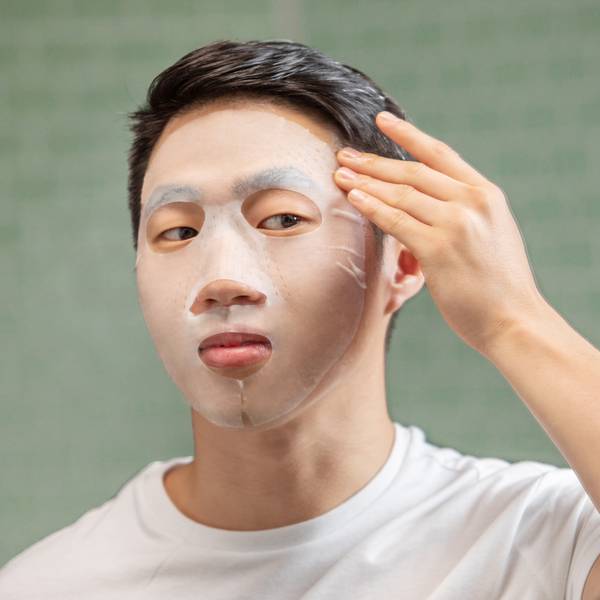
Dry Skin Set
good for:
Skin feeling a bit thirsty? The Dry Skin Set was crafted specifically for those with a dry skin type.
If you deal with flakiness, dull complexion, visible fine lines, red patches, or any combination of the above, this set was made for you. This is all you need to hydrate your skin—and keep it hydrated.
Includes Steps:
- 01 Purifying Clay Cleanser
- 02 Dark Circle Eye Rescue
- 03 Daily SPF + Moisturizer
- 04 Hydro Boost Gel Moisturizer
- 05 Cactus Soothing Face Mask
Get 30% OFF your first set subscription $122 $85.40 with code ‘FIRSTSET’
Dry Skin Set
good for:
Skin feeling a bit thirsty? The Dry Skin Set was crafted specifically for those with a dry skin type.
If you deal with flakiness, dull complexion, visible fine lines, red patches, or any combination of the above, this set was made for you. This is all you need to hydrate your skin—and keep it hydrated.
Includes Steps:
- 01 Purifying Clay Cleanser
- 02 Dark Circle Eye Rescue
- 03 Daily SPF + Moisturizer
- 04 Hydro Boost Gel Moisturizer
- 05 Cactus Soothing Face Mask
Get 30% OFF your first set subscription $122 $85.40 with code ‘FIRSTSET’
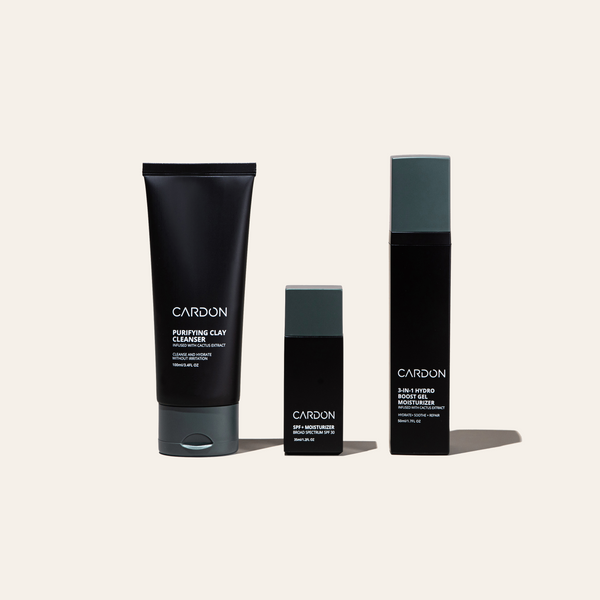
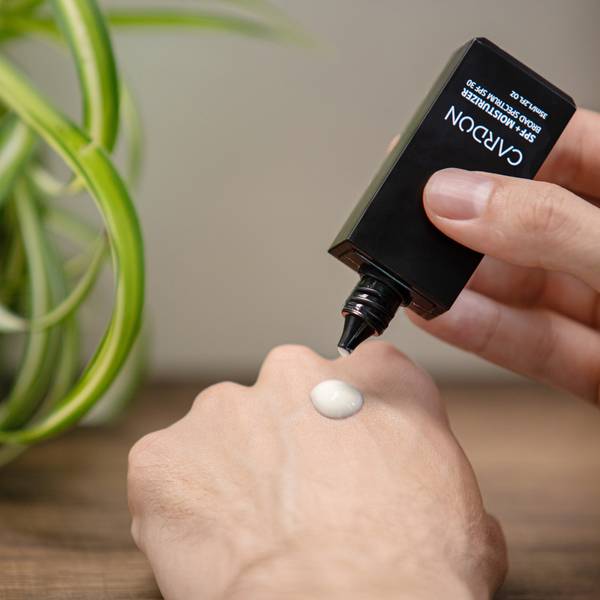
Beginners
Essentials Skincare Set
good for:
Everything you need, nothing you don’t—the Essentials Set is your skincare starter pack. Just cleanse, moisturize, and protect. We took the guesswork out of developing a skincare routine. This is all you need for everyday skin health.
Includes Steps:
- 01 Purifying Clay Cleanser
- 02 Daily SPF + Moisturizer
- 03 Hydro Boost Gel Moisturizer
Get 30% OFF your first set subscription $71 $49.70 with code ‘FIRSTSET’
Essentials Skincare Set
good for:
Everything you need, nothing you don’t—the Essentials Set is your skincare starter pack. Just cleanse, moisturize, and protect. We took the guesswork out of developing a skincare routine. This is all you need for everyday skin health.
Includes Steps:
- 01 Purifying Clay Cleanser
- 02 Daily SPF + Moisturizer
- 03 Hydro Boost Gel Moisturizer
Get 30% OFF your first set subscription $71 $49.70 with code ‘FIRSTSET’
Cardon Products Are
Easy to Use
We never create two products when we can achieve the same results with one. Cardon products are designed to be easy to use every day.
Backed By Korean Innovation
Korean R&D is two decades ahead of the rest of the world. Cardon products use the highest quality, most effective ingredients out there.
Non-Toxic
Finally, an ingredient label you can feel good about. Every ingredient in Cardon products is good for your skin, and easy on the mind.


